470 views
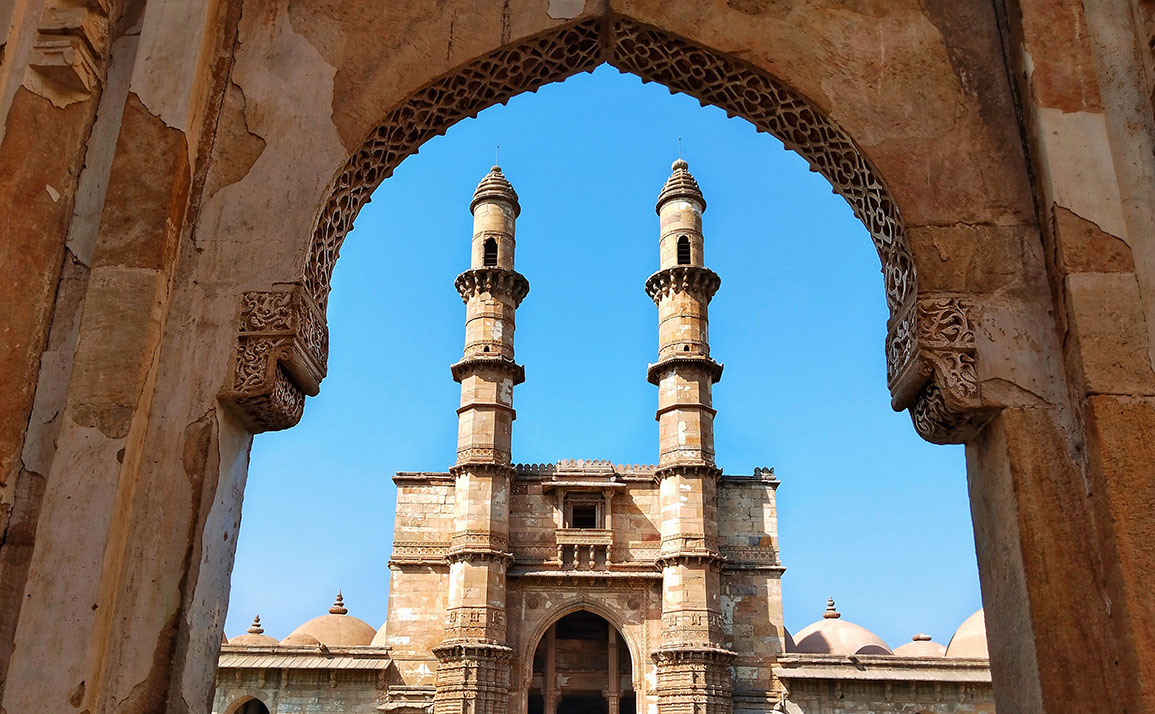
The Mysteries of Champaner
By Rahuldev Rajguru
Last Updated: 07 Jun 2023
In the enchanting tapestry of Gujarat's landscapes, there exists a hidden jewel that has patiently awaited its moment in the spotlight. Amidst undulating hills and verdant valleys, a region of mesmerizing allure quietly beckons, veiled from the view of the general public. Astonishingly, even among Gujaratis, including myself, the captivating history woven into the fabric of this unassuming destination remains a well-guarded secret. Once a resplendent capital of Gujarat, this hidden gem radiated grandeur and significance, etching its name indelibly in the annals of Gujarat's storied past.
Unbeknownst to many, Champaner, the 15th century "smart city", holds the esteemed title of being Gujarat's first UNESCO World Heritage Site. Although countless visitors flock to the nearby Pavagadh temple, Champaner-Pavagadh Archaeological Park often goes unnoticed by those unaware of its captivating secrets. During my recent visit to Vadodara, I embarked on a day trip to Champaner, uncovering its hidden treasures and shedding light on a place rich with cultural and historical significance.
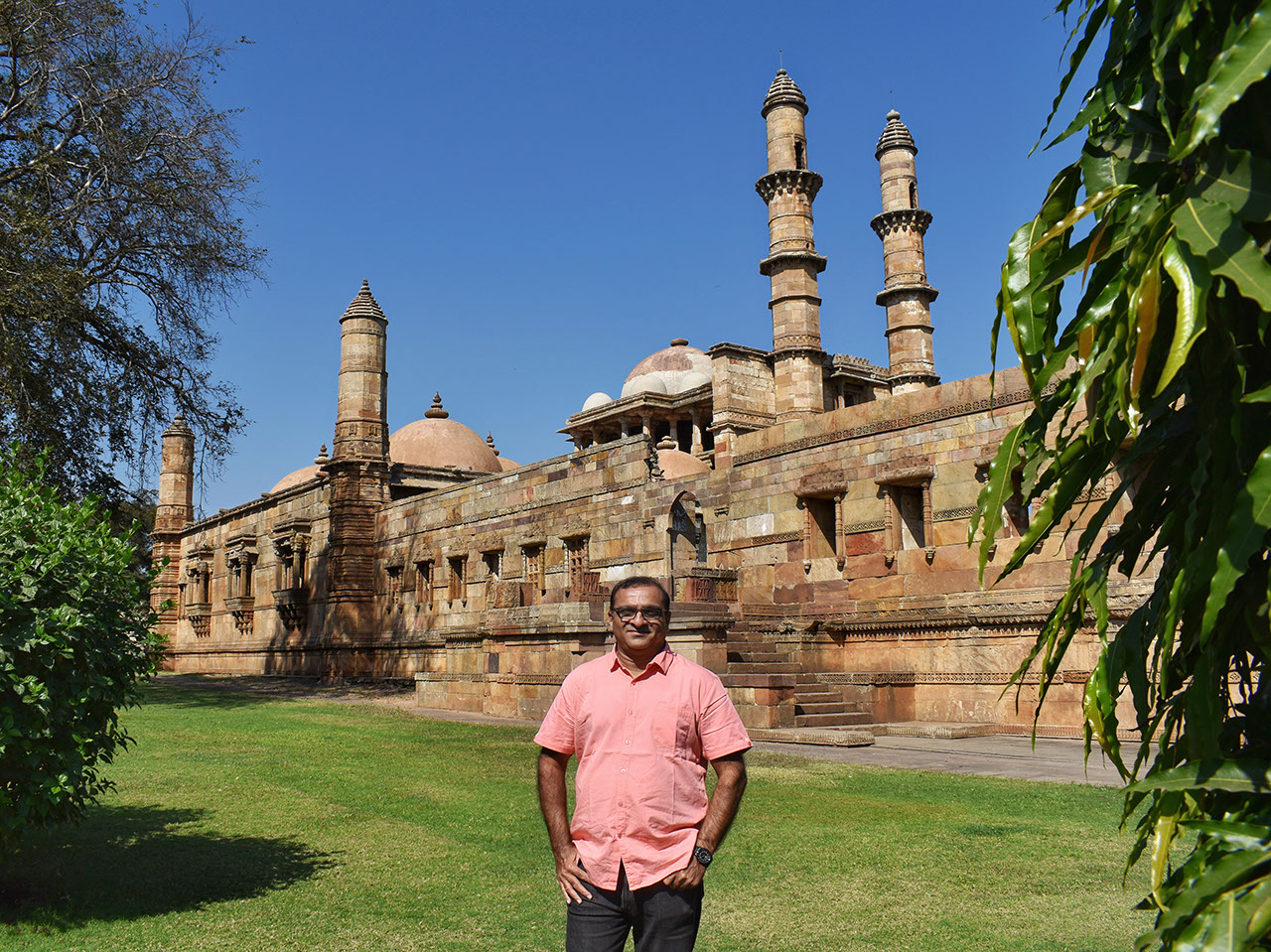
It's me posing in the gardens of the Champaner UNESCO World Heritage Site
An enchanting tale of Champaner's history
The name "Champaner" itself holds a fascinating history that traces back to ancient times. Legend has it that the town derived its name from a tribal chieftain known as Champa Bhil. He was a valiant warrior and a revered figure among the Bhil community, an indigenous group that inhabited the region. He was also a minister during the rule of Vanraj Chavda from the Anhilwad dynasty in the 8th century (746 - 806 CE). Another intriguing theory suggests that the name Champaner has its roots in the Sanskrit word "Champa," which refers to the fragrant Champa flower. Pavagadh hills surrounding Champaner consist of reddish-yellow stones which is one of the oldest rock formations in the country. The pigmentation of the rocks are often compared to "champa" flowers that resemble the flames of fire. The region is abundant with these exquisite flowers, known for their intoxicating scent and vibrant colors.
Between the 10th and 15th century, various dynasties, including the Solankis, Chauhans, Khichi Rajputs and Fateh Ravals, ruled over Champaner during this period. These dynasties held sway over the region and contributed to its cultural and architectural development. Hence, here you will find a touch of architecture that you could see in Modhera Sun Temple, Rani ni Vav (built by Solanki Chalukyas) and Laxmi Vilas Palace in Vadodara. The Sultan of Ahmedabad, Nasiruddin Mahmud Shah conquered Pavagadh Fort in 1484. He also conquered Idariyo Gadh in Idar, one of the toughest fortresses in Gujarat. He was known as Mahmud Begada for conquering two 'Gadh', the toughest fortresses on the mountain. In Gujarati, "Begada'' refers to someone who has conquered two Gadhs.
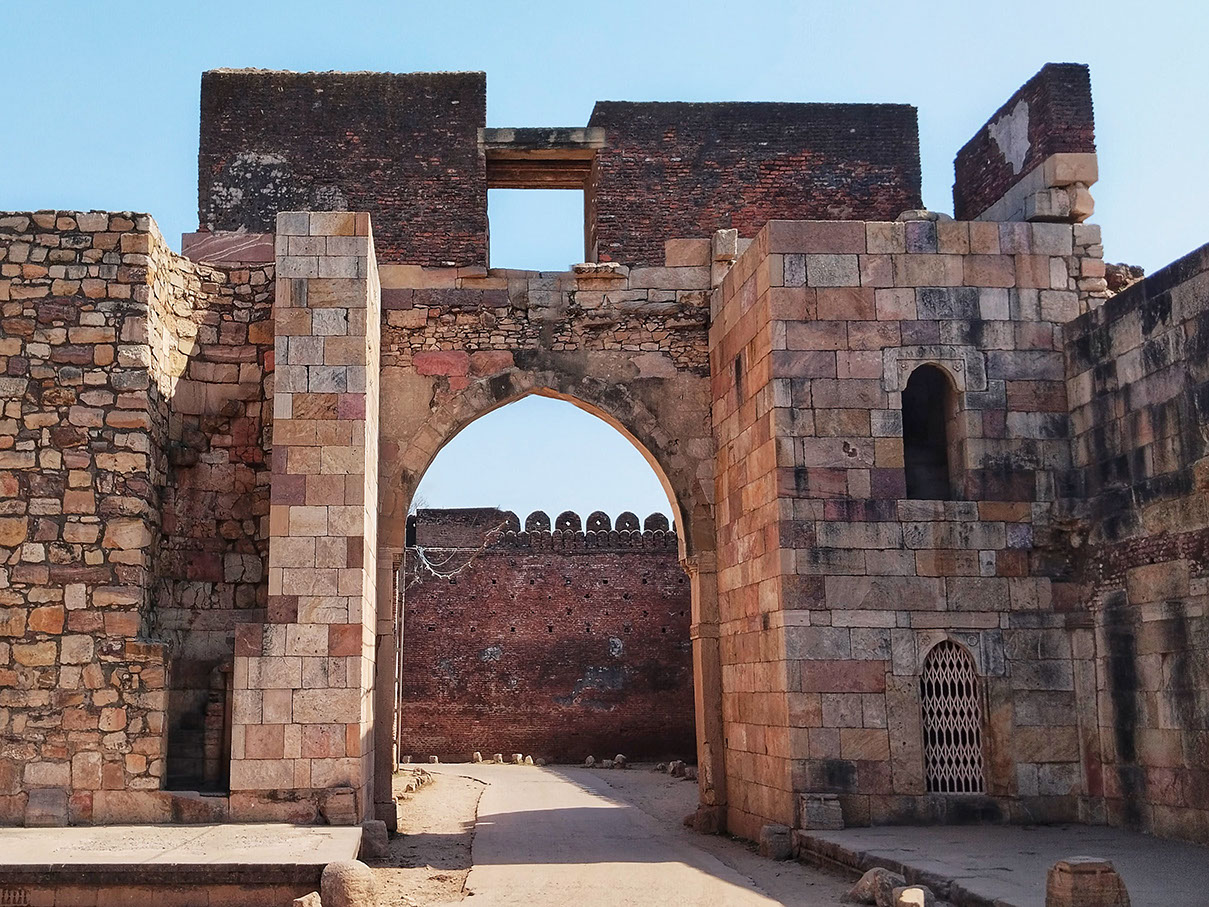
One of the resurrected gates of Pavagadh Fort in Champaner
Mahmud Begada established Champaner as the capital of Gujarat Sultanate and renamed it to "Muhammadabad" after himself. He had a vision to develop a city in Gujarat that is equivalent to the holy Mecca. Under his rule, Champaner flourished and experienced a golden age of prosperity, with the construction of magnificent structures and the blending of Islamic, Hindu and Jain architectural styles. A major economic force in Gujarat, Champaner had 52 bazaars (markets) where merchants from across the world traded. Champaner is believed to be the last surviving ancient city with islamic architecture that predates the mughal era.

During the 16th century, the Mughal Empire, under Emperor Humayun, sought to expand its territories and influence in India. Humayun, in his campaign against Gujarat, besieged Champaner in 1535 and looted the coffers. Champaner gradually declined in significance and fell into a state of neglect. The once grand structures began to crumble, and the town lost its prominence.
The Marathas later ruled Champaner, as did the British for a short time, but it could never regain its ancient glory. British colonial officers during the 19th century discovered the ruins of Champaner which subsequently led to the excavation. Excavation efforts were led by a prominent British archaeologist, James Burgess. Under his guidance, systematic excavations began, unearthing the hidden treasures and structures buried beneath layers of time and neglect. The efforts extended over several decades. Today, the Champaner-Pavagadh Archaeological Park showcases the fruits of these excavations, allowing visitors to wander through the ancient ruins and marvel at the remnants of the town's former splendor. As a result, UNESCO in 2004 declared Champaner-Pavagadh Archaeological Park a World Heritage Site, recognizing its exceptional cultural and historical value.
The forgotten world of whispers and antiquity
Stepping foot into the realm of Champaner was like crossing the threshold into a forgotten world. The air was heavy with the whispers of antiquity, and my eyes were immediately drawn to a magnificent tapestry of ancient fortifications that stretched as far as the eye could see. Their weathered surfaces revealed the passage of time, adorned with tales etched in every crack and crevice.
The towering bastions, once guardians of Champaner's glory, now stood as silent witnesses to the passage of empires. Amongst the ruins and remnants, a few brave fragments had withstood the test of time. A resurrected entry gate stood defiantly beckoning me to step closer and immerse myself in the ancient tale it held.
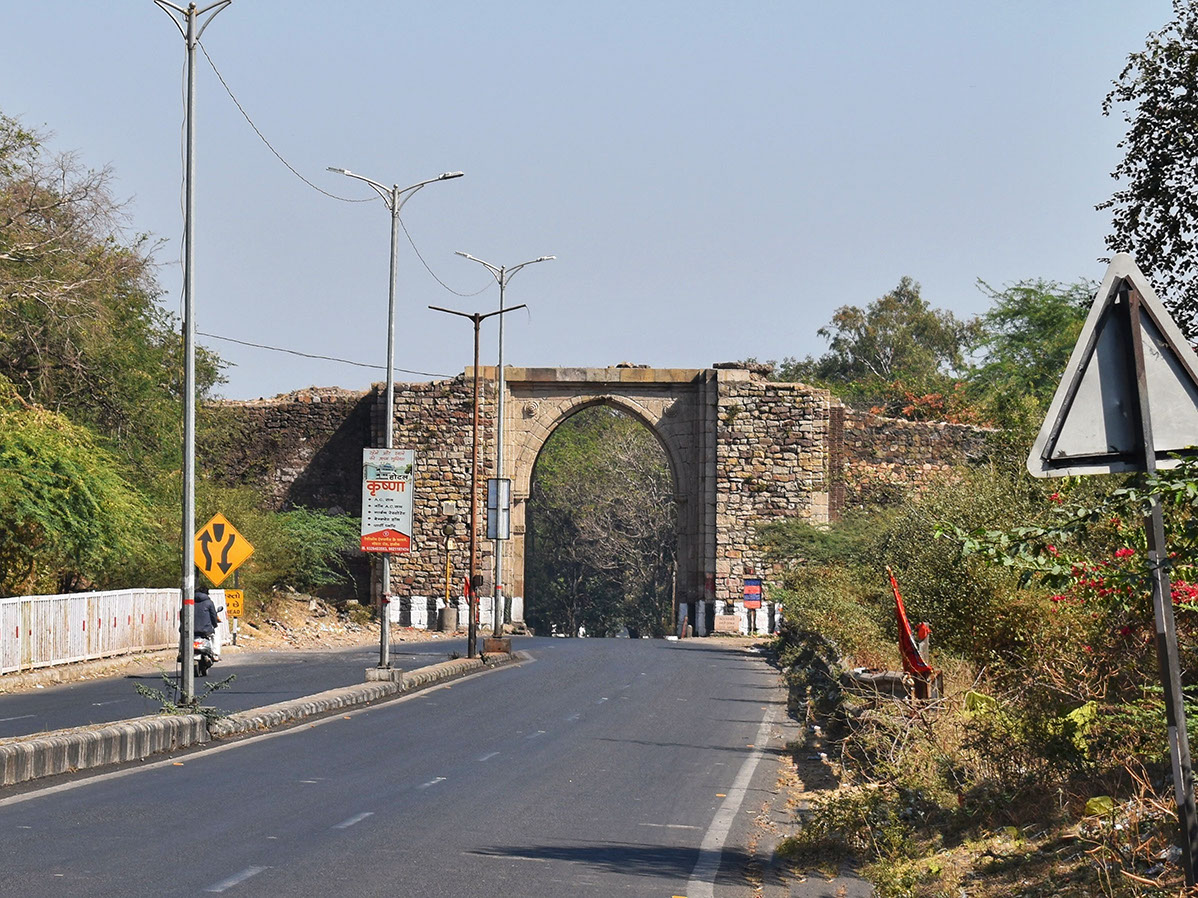
The gate to Champaner's ancient fort lies in ruins
Passing through the gate, I felt as if I had been transported back in time to the heyday of Champaner, when its walls were bustling with life and its fortifications standing tall.
Saher-ki-Masjid: A fusion of serenity and architectural splendor
As soon as you cross the first gate in Champaner's old city and enter the zig-zag streets, you reach Saher-ki-Masjid. Here you can purchase tickets for various monuments and start your heritage walk to Champaner.
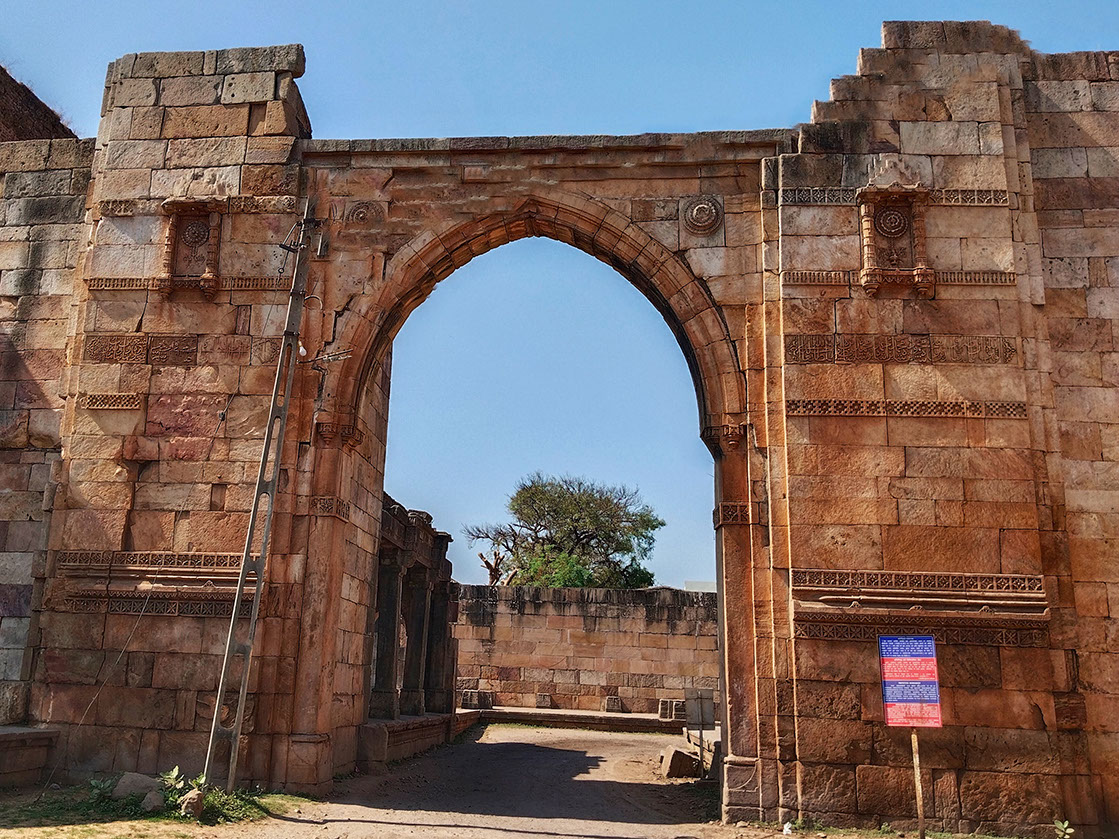
Gate leading to Saher-ki-masjid
After arriving here, I inquired about a guide at the ticket window. It surprised me that I was the only visitor. There are not many guides in Champaner. They called a guide and he arrived within 30 minutes from Halol. I usually refrain from hiring a guide at Gujarat's heritage sites since most of them have shallow knowledge and are always in a hurry. In contrast, when I visit a heritage site in Karnataka, Tamil Nadu, or Andhra Pradesh, I always hire a guide. Tourism in Gujarat is relatively new and people are only beginning to visit the state in recent years. Therefore, the culture of hiring a guide and getting deep into a subject matter has not yet developed. Since the majority of the guides have been given a crash course by the government, their interest level is quite low.
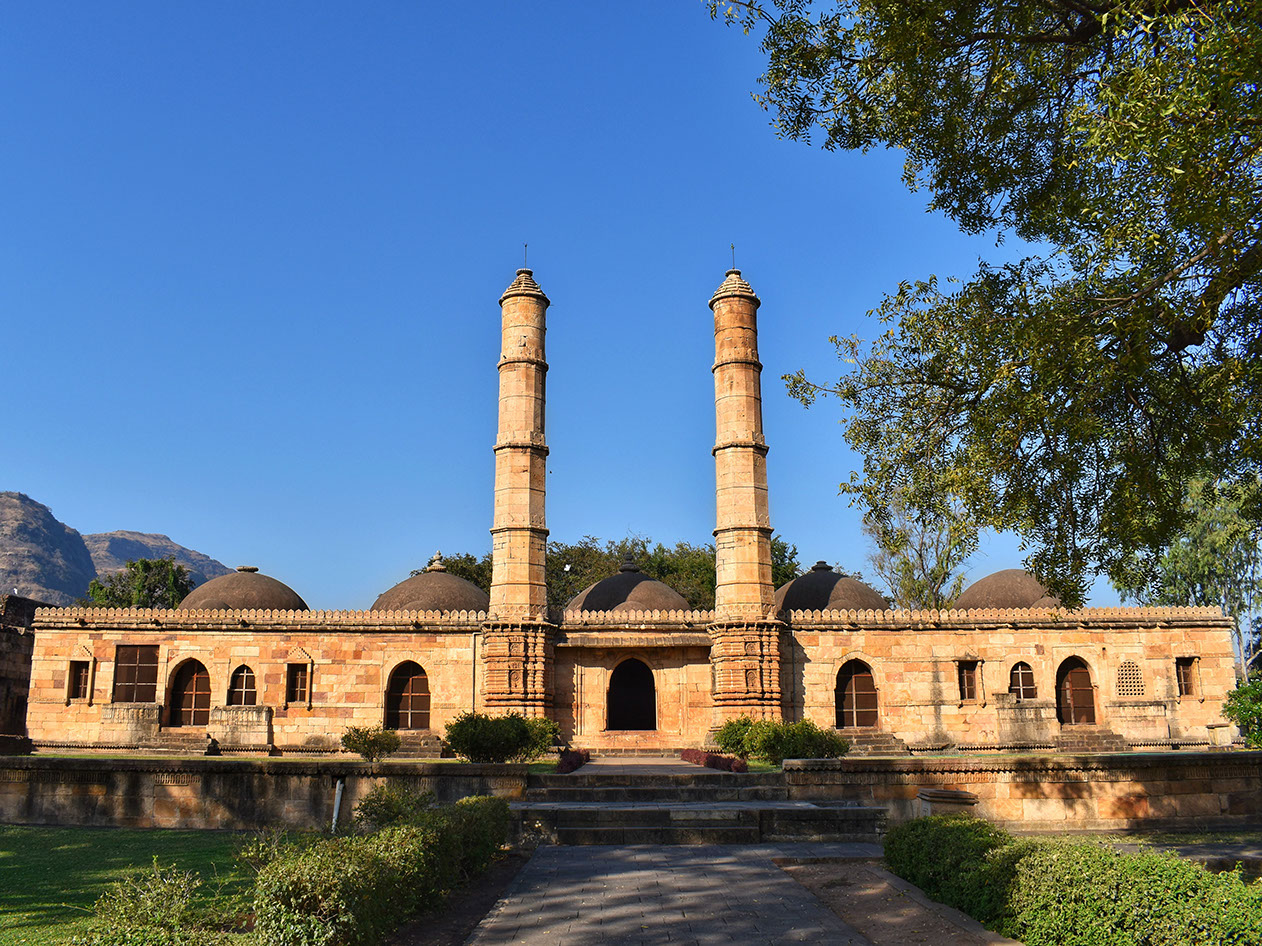
A front view of Saher-ki-Masjid
Since this was an impromptu visit, I did not have time to study Champaner beforehand. As a result, I was left with no choice but to hire a guide. Despite paying INR 1,500 for a 5-hour guided tour to Champaner, I was utterly dissatisfied with the quality of the tour. After the guide ended the tour, I was able to obtain much more accurate information and data from the locals and security personnel. I have tried my best to describe this mesmerizing place to the best of my understanding and research in order to save you the hassle of hiring a guide.
Saher-ki-Masjid (Mosque of the City) was a private mosque built only for the royal families and nobles of the Gujarat Sultanate. The first glance at the architecture of this mosque reminded me of my visit to Jama Masjid in the walled city of Ahmedabad, another UNESCO World Heritage Site in Gujarat. It stands as a testament to the fusion of Islamic and Hindu architectural styles.
Approaching the mosque, one is immediately struck by its imposing facade, adorned with intricate carvings and delicate latticework. The craftsmanship is breathtaking, showcasing the skill and artistry of the artisans of yore. As you step inside, a sense of tranquility washes over you, as if the walls themselves exude a serene aura.
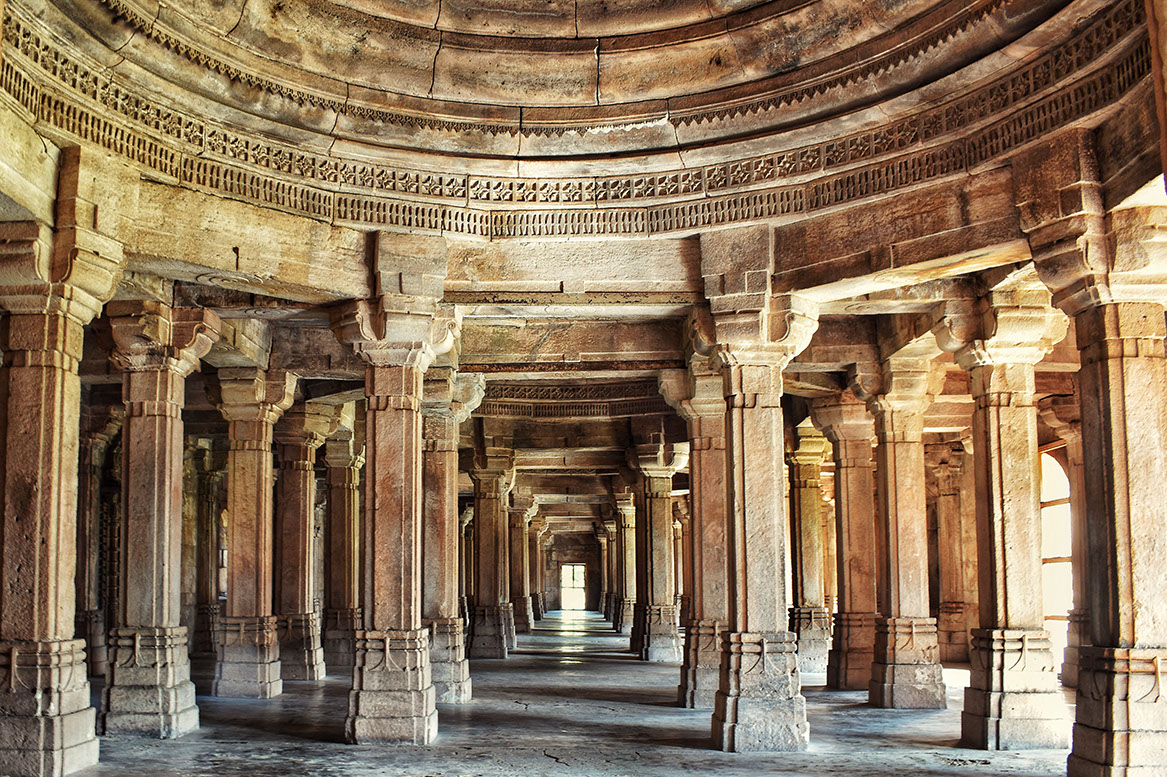
The prayer hall exhibits the elegance of ancient architecture through its symmetrical design
The mosque stands on an elevated platform, spanning 56x40 meters, boasting a grand prayer hall and five mihrabs. A magnificent central arched entrance, adorned with intricately carved minarets, grants access to the prayer hall. Uncommonly, there are also two arched entrances flanked by jharokhas on either side, exclusively designated for the women of royal families. Proceeding through any entrance leads to the center row, where a domed structure gracefully looms overhead.
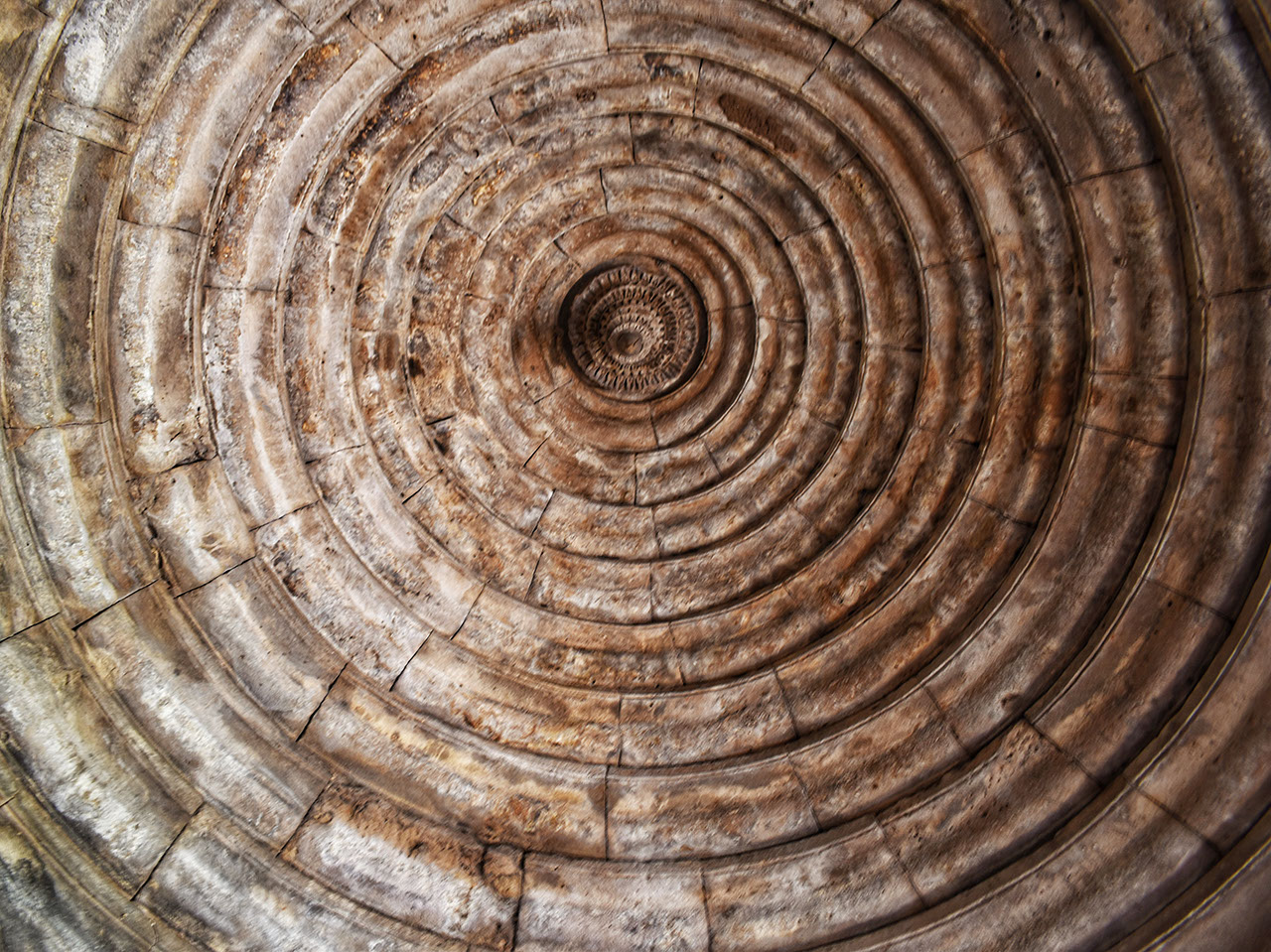
An interior perspective of the mosque's cupola (a dome with circular canals that provide ventilation)
The interior of Saher-ki-Masjid is a symphony of geometric patterns, calligraphy, and arches that stretch towards the heavens. The prayer hall is a spacious sanctuary, where light filters through the pierced stone screens, creating an ethereal atmosphere. The mihrab, or prayer niche, commands attention with its intricate detailing and elegant design.
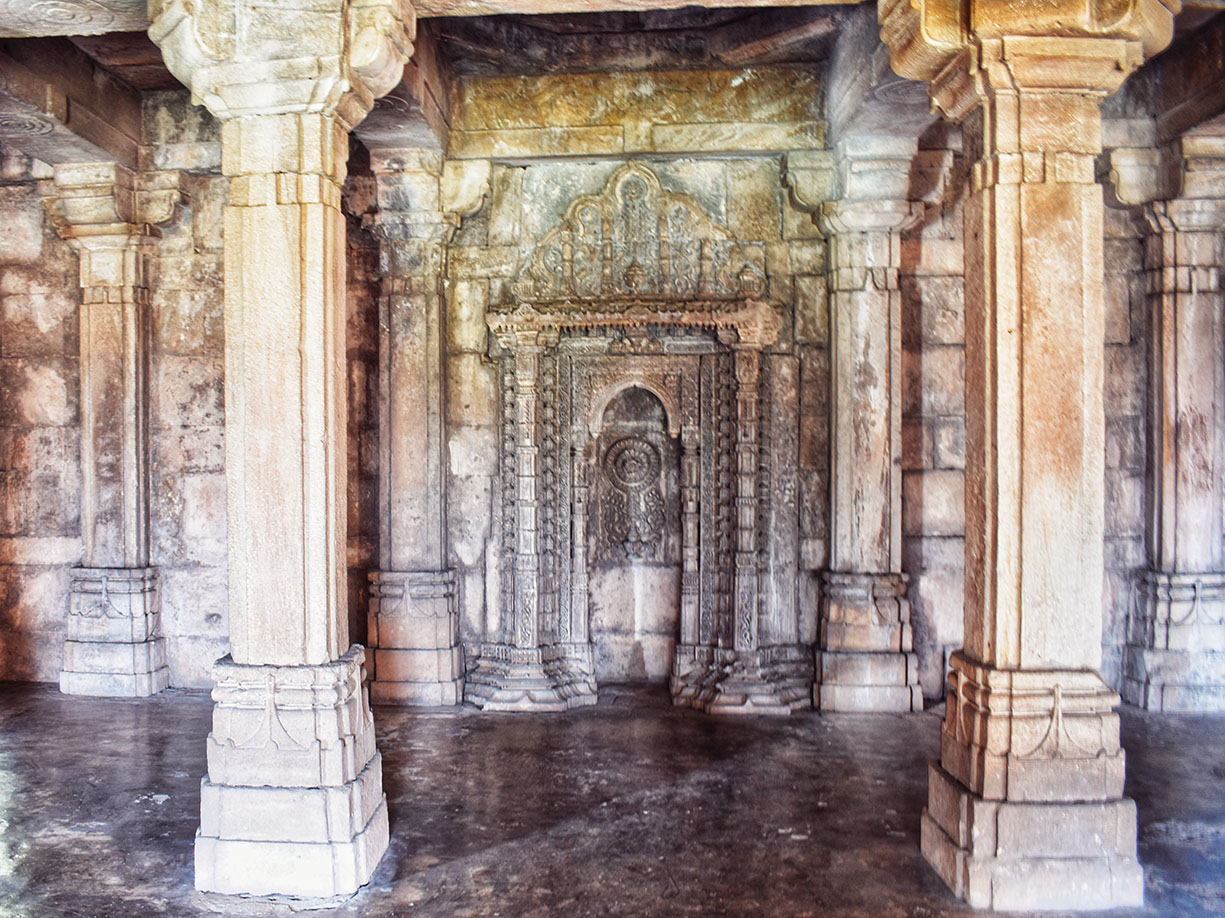
The central Mihrab indicates the direction to Mecca
The majestic Jami Masjid
Our next destination was the architecture masterpiece of the 15th century, Jami Masjid. You need to preserve your ticket as without that you won't be allowed to enter the mosque. As we approached Jami Masjid, I was immediately struck by its grandeur.
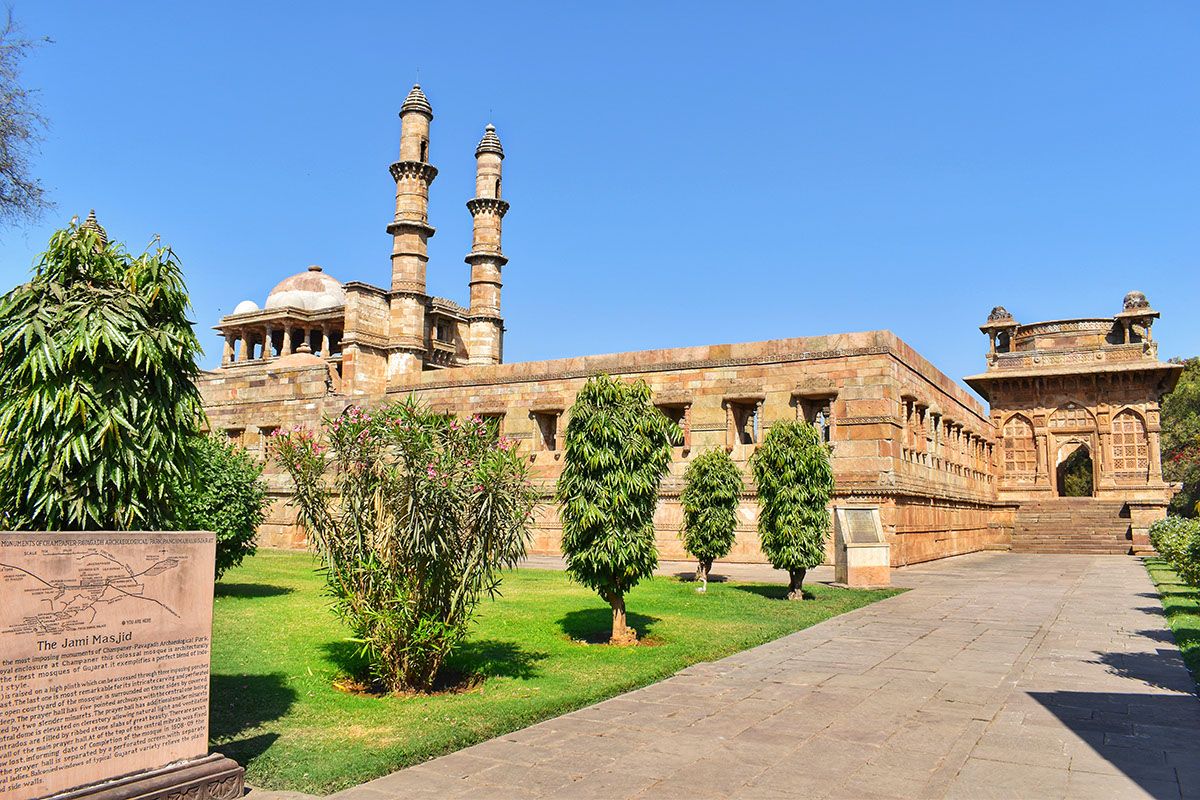
Taking in the grandeur of Jami Masjid as seen from the main entrance to the mosque
The construction of the Jami Masjid spanned over two decades, showcasing the meticulous craftsmanship and attention to detail that went into its creation. It started in 1484 and was completed in 1509 taking 25 years to build a sprawling complex.
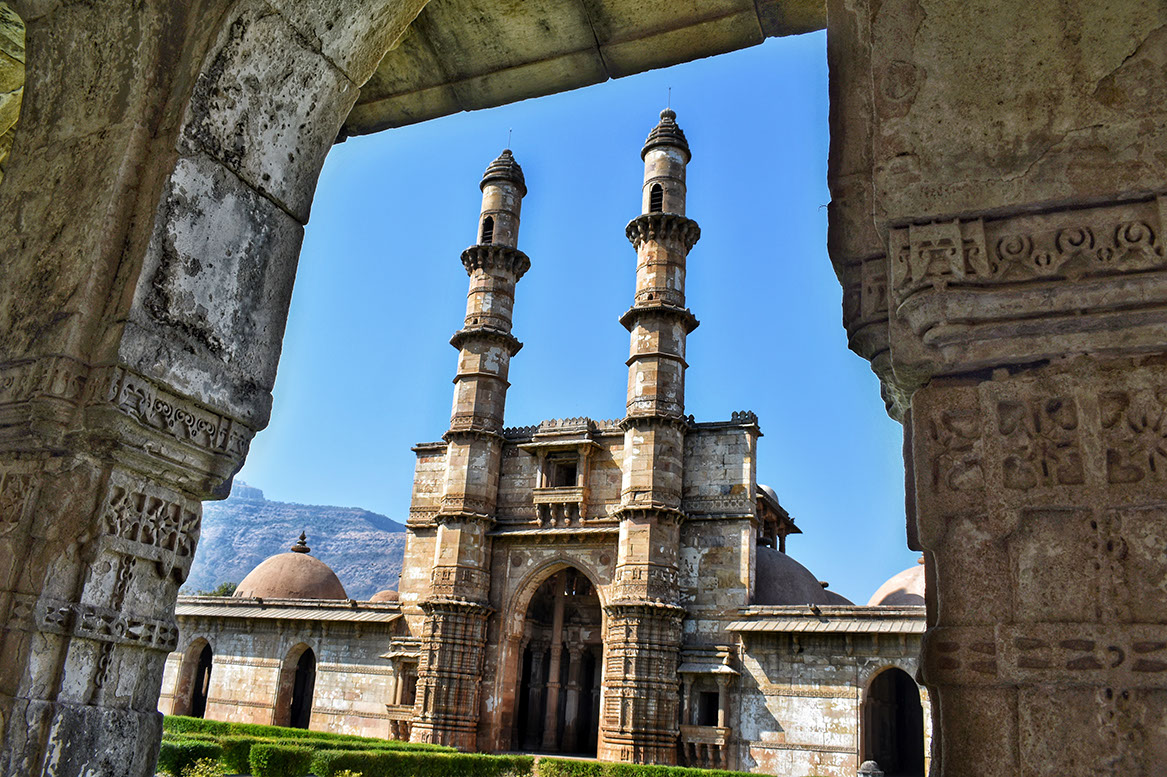
Observing the tall minarets from the corridor outside
What truly sets the Jami Masjid apart is its architectural fusion, seamlessly blending Islamic, Hindu, and Jain influences. The mosque's grand structure boasts a unique amalgamation of styles, with elements such as intricate carvings, ornate domes, and exquisite pillars that bear witness to the cultural diversity that thrived in Champaner. The architecture of Champaner is thought to have influenced Mughal architecture in India in the subsequent centuries.
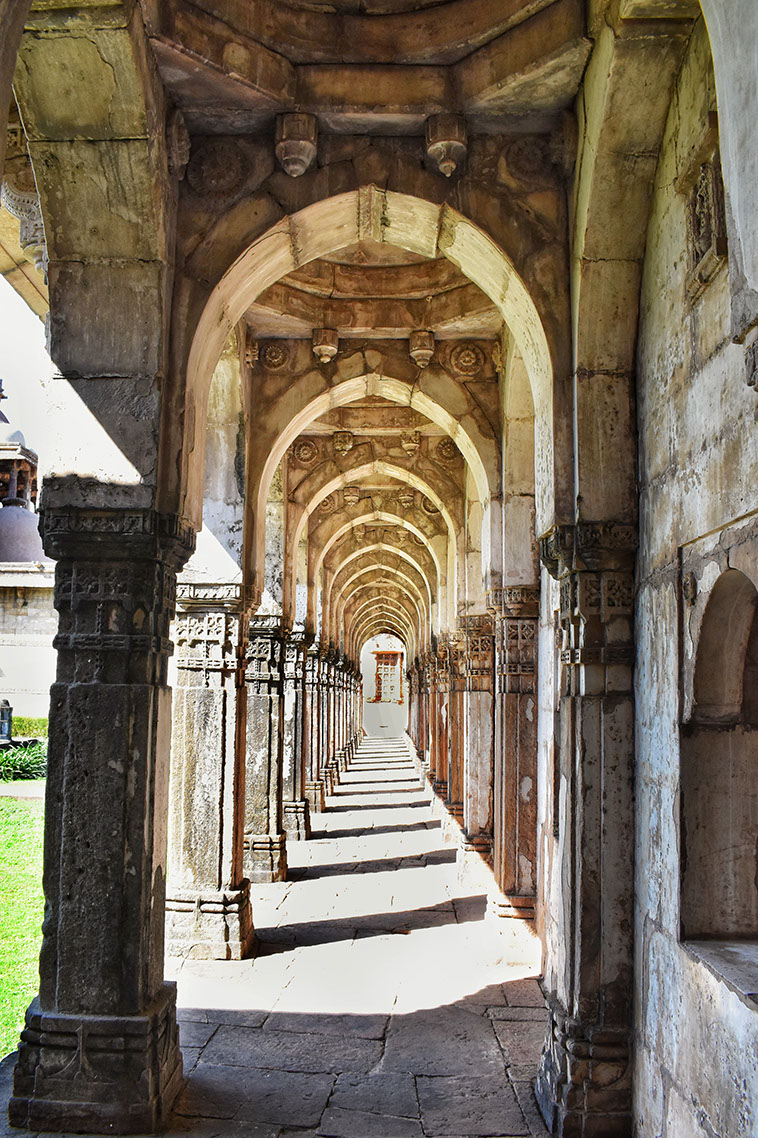
A tranquil corridor surrounds the courtyard
Approaching the mosque, one is greeted by multiple entrances, each exquisitely designed and adorned with intricate details. These entrances serve as portals, inviting visitors to immerse themselves in the splendor within. It is advisable to start your visit to Jami Masjid from Sopan Marg which is also known as the "Shahi Entrance" (Shahi means grand). There are three entrances to the mosque facing north, south and east. Sopan Marg is the east facing entrance and was meant for the common people to enter the mosque. Sopan Marg in Sanskrit means a flight of stairs to heaven. This is the most intricately carved entrance with perforated screens (known as jhalis). The adjacent walls have carvings of Asopalav at the plinth level which is known as Ashoka Toran in Hinduism.
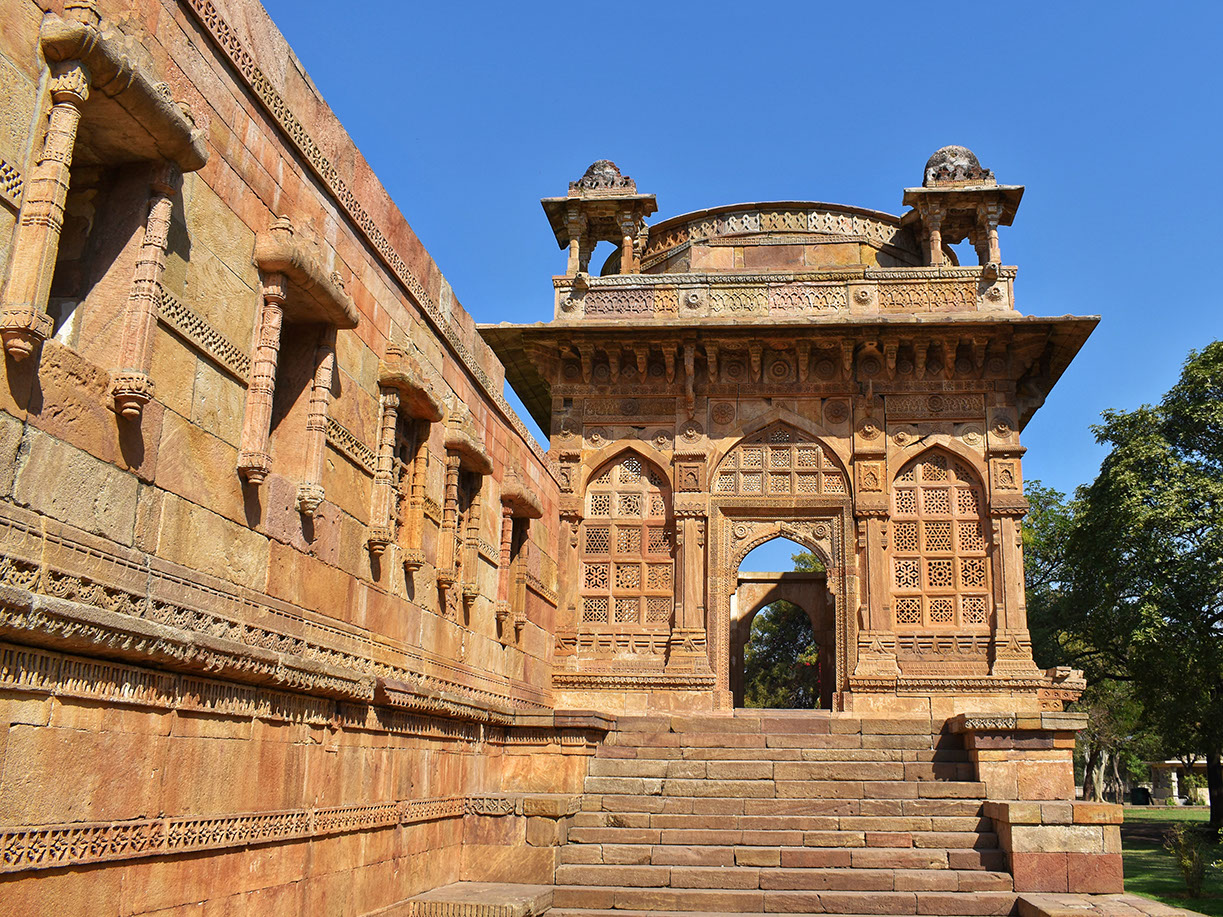
On the way to Sopan Marg - the mosque's east side entrance
Envision a world where the outer allure of the portico captivates your senses, enticing you to explore what lies within. As you venture along the enchanting Sopan Marg, your anticipation builds until you finally arrive at the majestic podium. Stepping through the threshold, I was instantly spellbound by the breathtaking interior of the portico. My mind was swept away as I beheld a mesmerizing symphony of intricate carvings adorning each facade. What made this sight even more extraordinary was the sheer uniqueness of the designs, with not a single repetition among the mesmerizing jhalis.
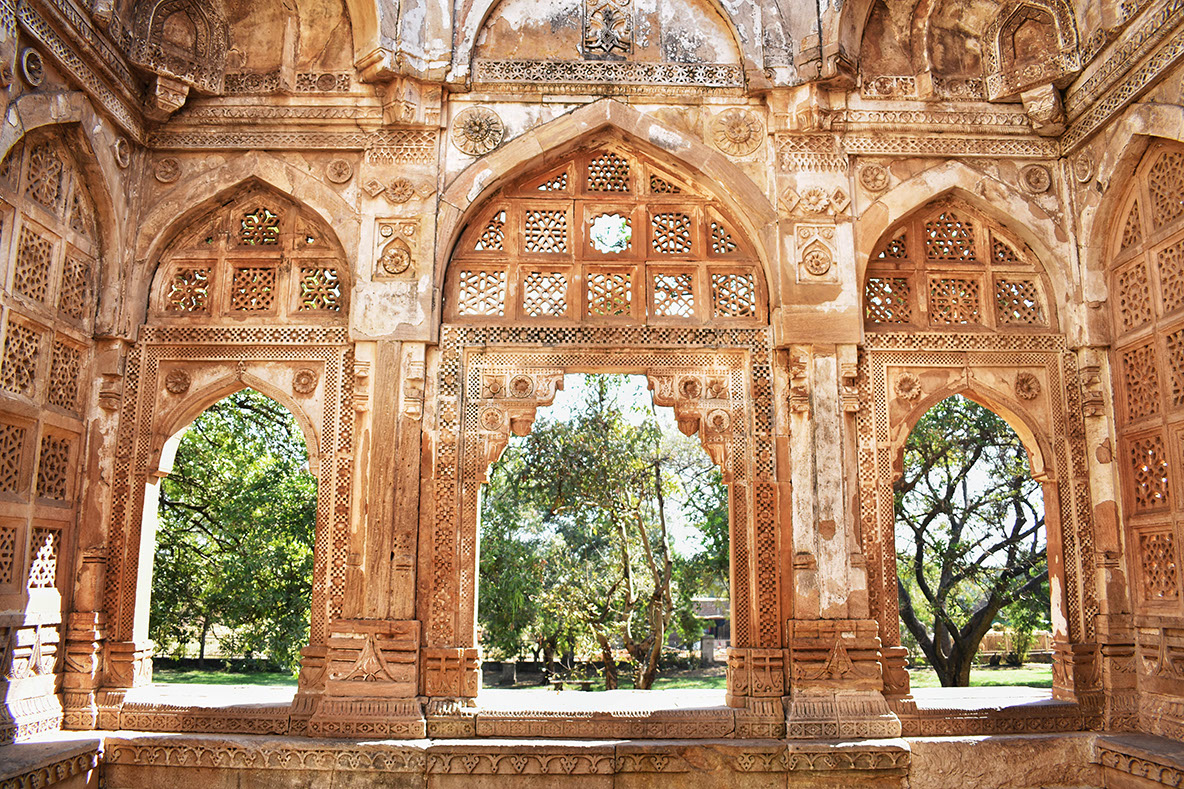
Unique designs of jhali decorate each facade of the portico
Amidst this architectural wonder, a large dome graced the portico, bearing the marks of time's passage. Damaged during the 2001 earthquake, it now embraced a celestial perspective, offering a tantalizing glimpse of the heavens through its open ceiling, as if inviting you to connect with the vastness above.
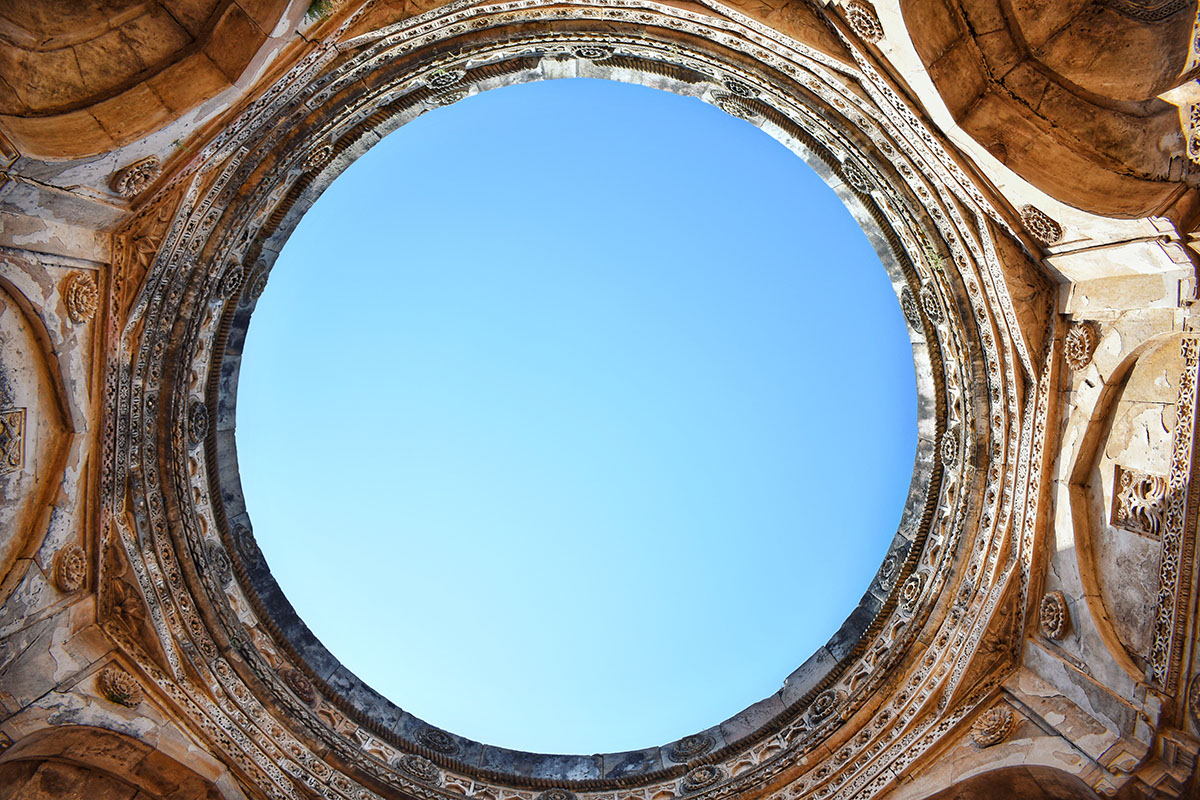
The damaged dome has left the roof of the portico open
Within the confines of the portico, I found myself immersed in a time-warp, where the minutes stretched like a suspended melody, carrying me 500 years into the past. Reluctantly, the guide's reminder broke the enchantment, beckoning us to continue towards the heart of the mosque. As I turned to the left, my gaze was instantly captivated by the sight of two colossal minarets soaring an impressive 30 meters into the heavens. Adorned with meticulously crafted designs and intricate motifs, the minarets stood as the crowning jewels of the architectural symphony, bestowing upon the entire composition a regal and awe-inspiring grandeur.
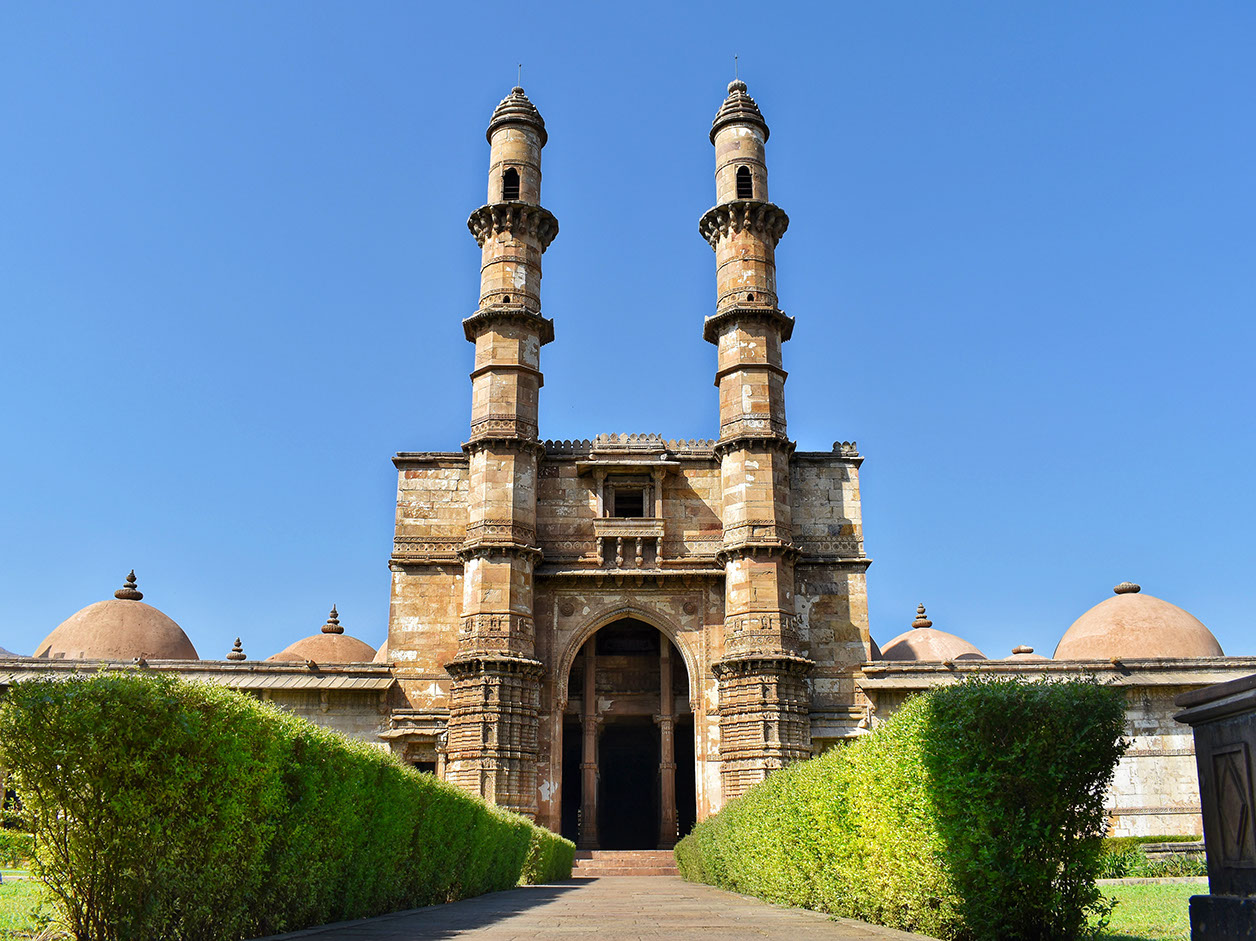
Typical Gujarat-style architecture with an oriel window flanked by two octagonal minarets
According to my guide, the mosque features a remarkable ensemble of 11 domes, with five on each side and a prominent central dome. Interestingly, these domes showcase motifs commonly associated with Hindu temples, such as pots and lotus insignia. What's even more intriguing is that the mosque's design was a collaborative effort, with contributions from architects representing Islam, Hinduism, and Jainism. There is a striking resemblance between the intricate carvings here and those found in the renowned Ranakpur Jain Temple. Additionally, the mosque's symmetrical architecture ensures a consistent and captivating view from any angle, revealing the stunning interior in all its glory.
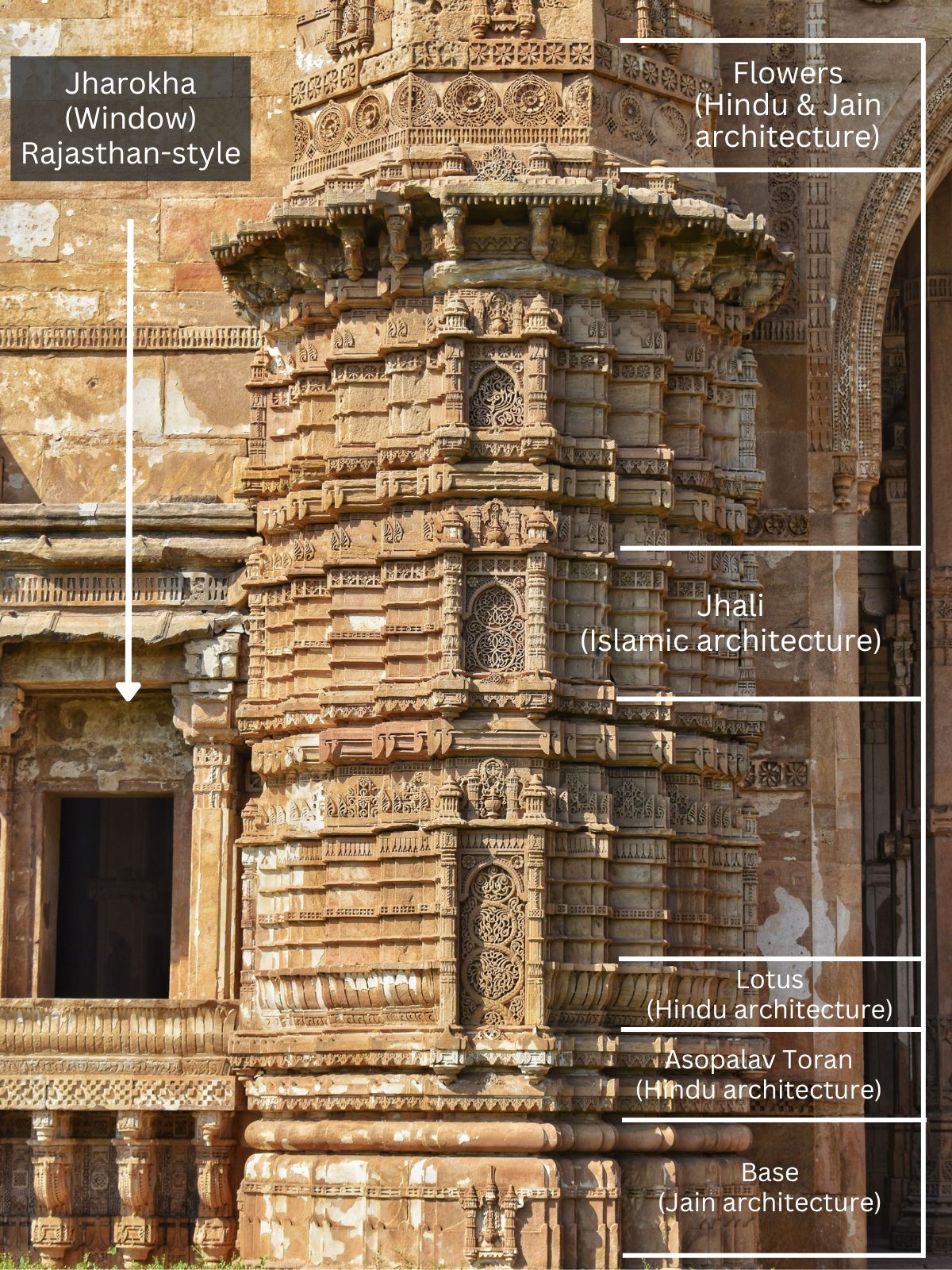
An intricate carving and unique jhali design at the base of the minaret combine various architectural styles
The mosque is crafted from sandstones meticulously interlocked together, without the need for cement or other bonding materials. Inside, the prayer hall is supported by an impressive array of 242 pillars. An interesting feature is the octagonal garbhagriha beneath the main dome, reminiscent of Hindu temples. The central dome, standing tall on its two-story structure, is elevated on the clerestory, welcoming ample natural light and ventilation. A sight to behold, the dome's inner beauty is enhanced by ribbed stone slabs, casting an enchanting allure when observed from below.
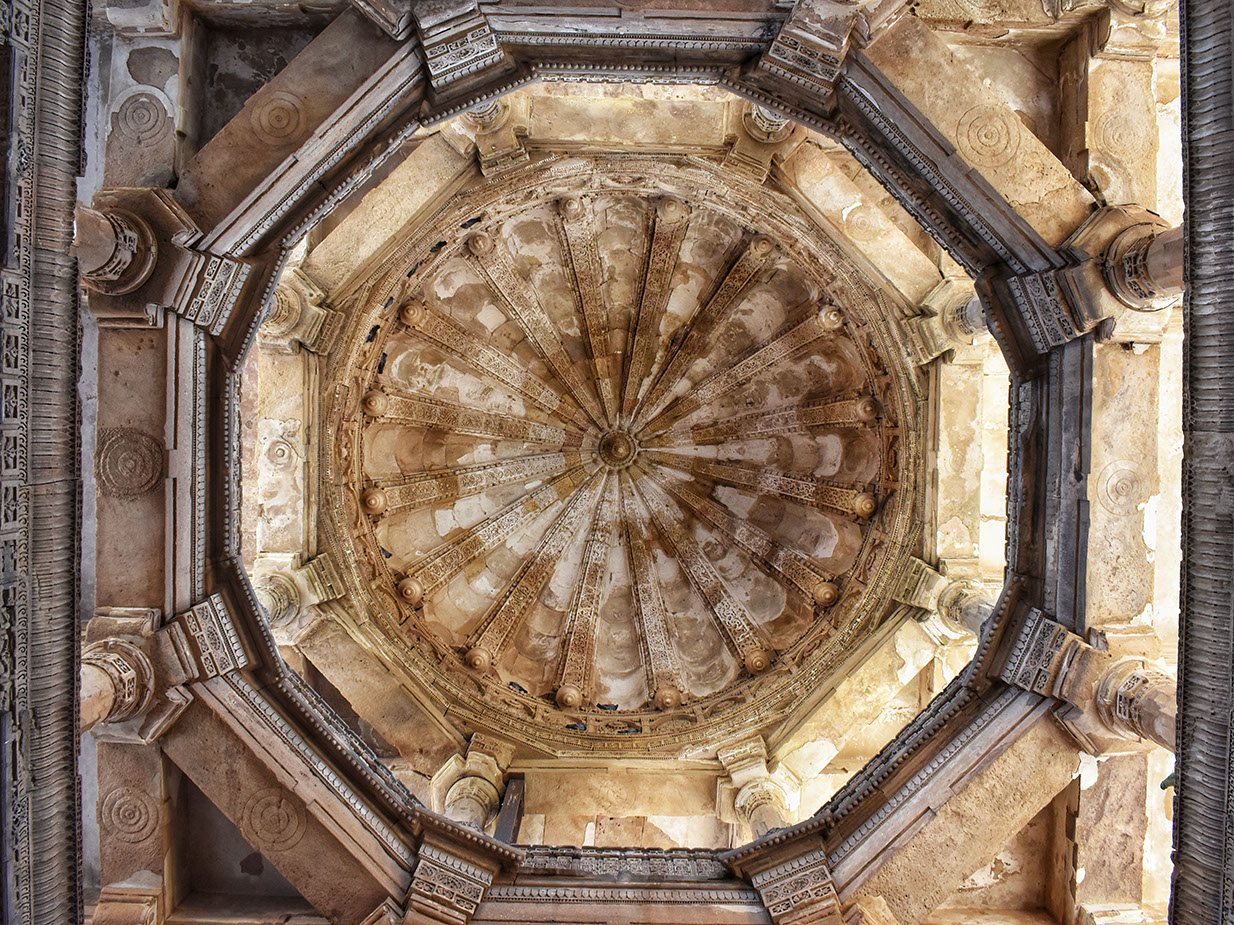
Mosque's beautiful two-storey central dome provides ventilation
As we progress towards the marble mihrab from the main prayer hall, we may unintentionally miss a breathtaking sight above us - a remarkable Kalpavriksha adorning the ceiling. In Jainism, the Kalpavriksha is a wish-granting tree, capable of fulfilling desires. It is believed that standing beneath this sacred tree in the mosque and making a wish ensures its manifestation. The carvings within the Kalpavriksha take the form of the "OM" symbol, symbolizing unity that holds deep significance in Hinduism and various other religions.
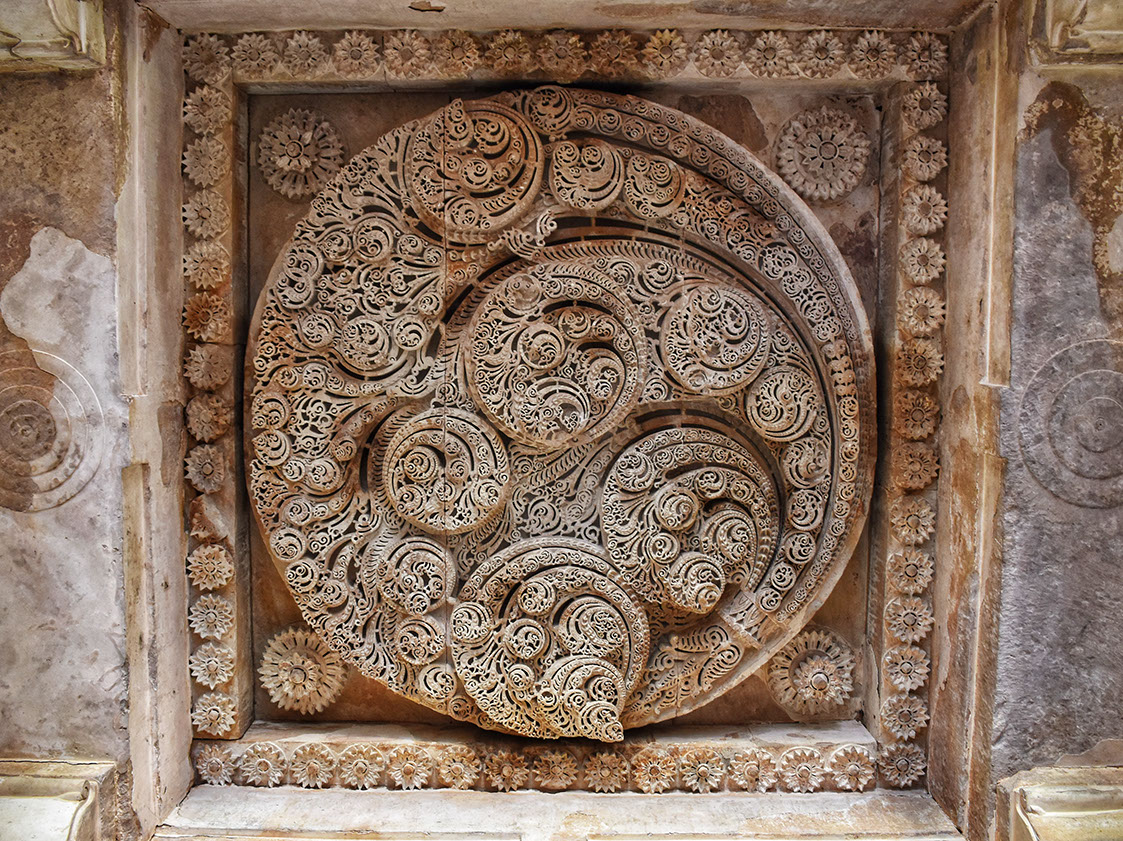
On the ceiling are fractal carvings in the shape of a Kalpavrishka
As you approach the far end wall, a captivating motif captures your attention. It is one of the mosque's seven mihrabs, distinguished by its exquisite marble construction. This design beautifully blends elements of Indo-Islamic architecture. Adorning the top near the ceiling is a toran (insignia), embellished with intricate depictions of elephants, flowers, bells, and pots - a familiar sight in Hindu temples. Notably, this mihrab stands apart as the sole marble creation, while the remaining ones boast sandstone craftsmanship.
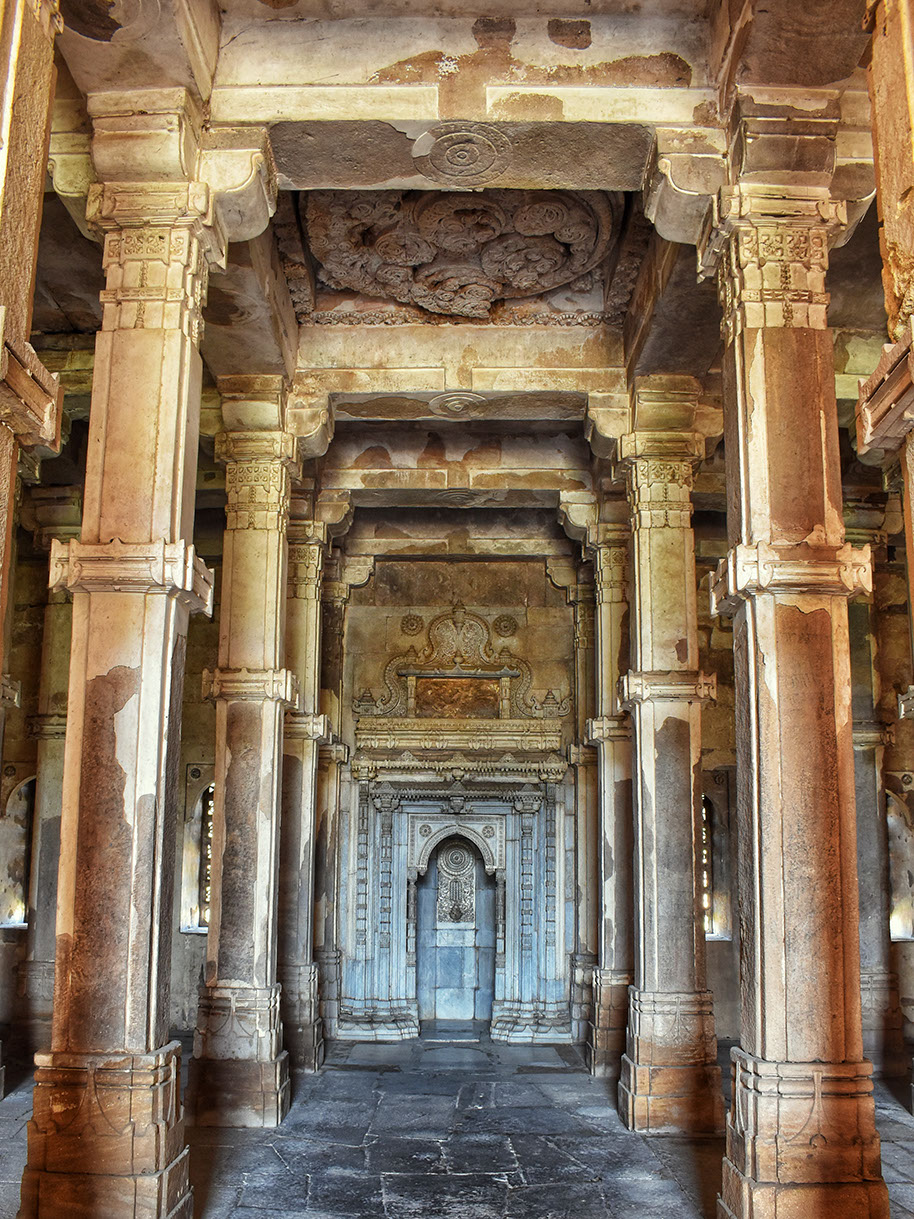
The central mihrab is made up of marble stones
When you take a closer look at the marble structure, you'll see that it has three different elements. At the top, there's a design of surya chakra, which is a Jain architectural element. In the middle, there are chains, which are a feature commonly found in Islamic architecture. And at the bottom, there's a pot, which is a part of Hindu architecture. These three elements come together to create a unique and diverse design in the mihrab.
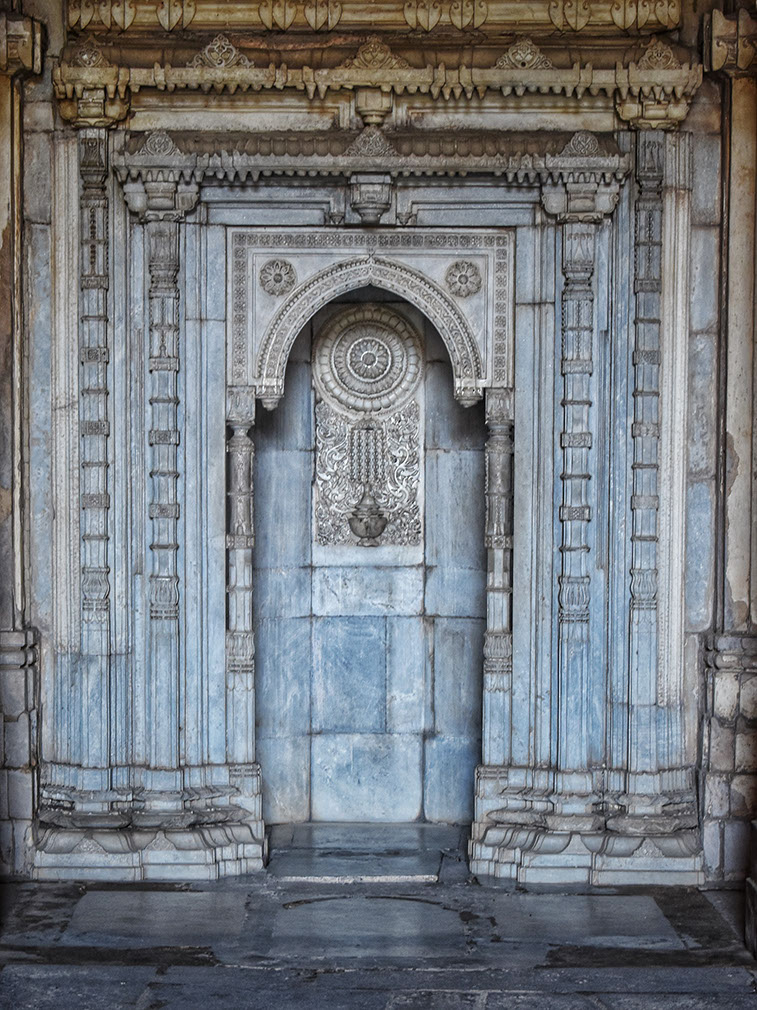
Featuring beautiful carvings in the marble stone, the central mihrab combines three architectural elements
The Jami Masjid has around 51 windows with unique designs of jhalis (screens). These windows bring in plenty of light from all directions into the prayer hall. One remarkable thing about these windows is that they also help to naturally cool the mosque. They transform the hot air outside into cool air as it enters, creating a refreshing environment inside. The jhalis are designed in different geometric shapes, adding to the beauty and uniqueness of the mosque's windows.
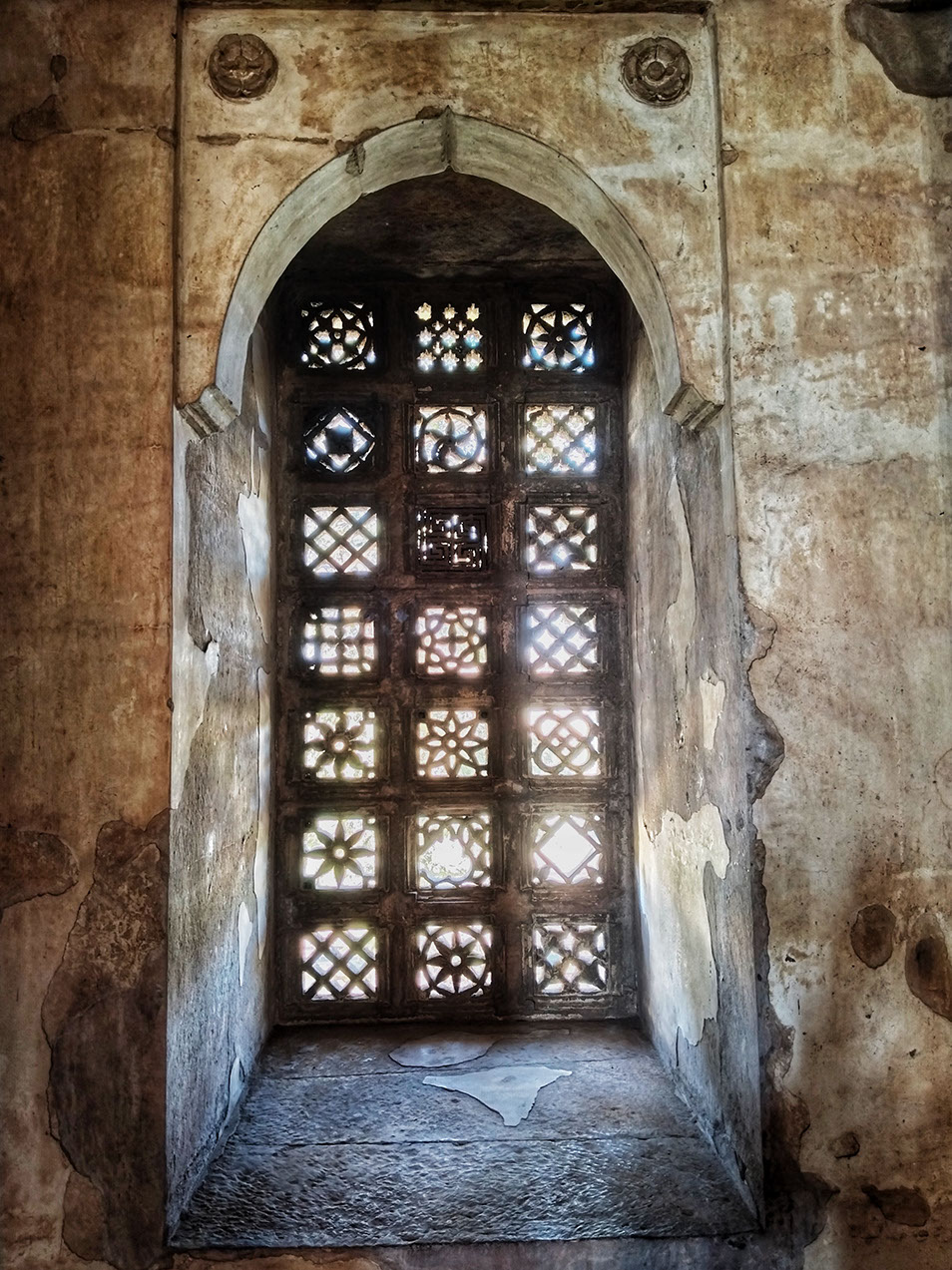
A mosque window has geometric patterns carved into its jhali
The entire mosque was coated with a plaster of paris polish, and some remnants of this polish can still be seen on the walls and pillars. This gave the mosque a shiny appearance, reminiscent of marble. While there are many Juma Masjids in India, this particular mosque was named "Jami" Masjid for a special reason. "Jamie" is an Arabic word meaning "unifier." This mosque was unique as it allowed royal women to enter and pray, breaking convention. A section of the prayer hall, known as Janan Khana or Muluk Khana, was reserved specifically for women and had a separate entrance. Another interesting feature inside the Jami Masjid was the "Maqsurah," an enclosure with jhalis placed near the mihrab. The Maqsurah was reserved for the Muslim ruler and his entourage, providing protection from assassins during prayer.
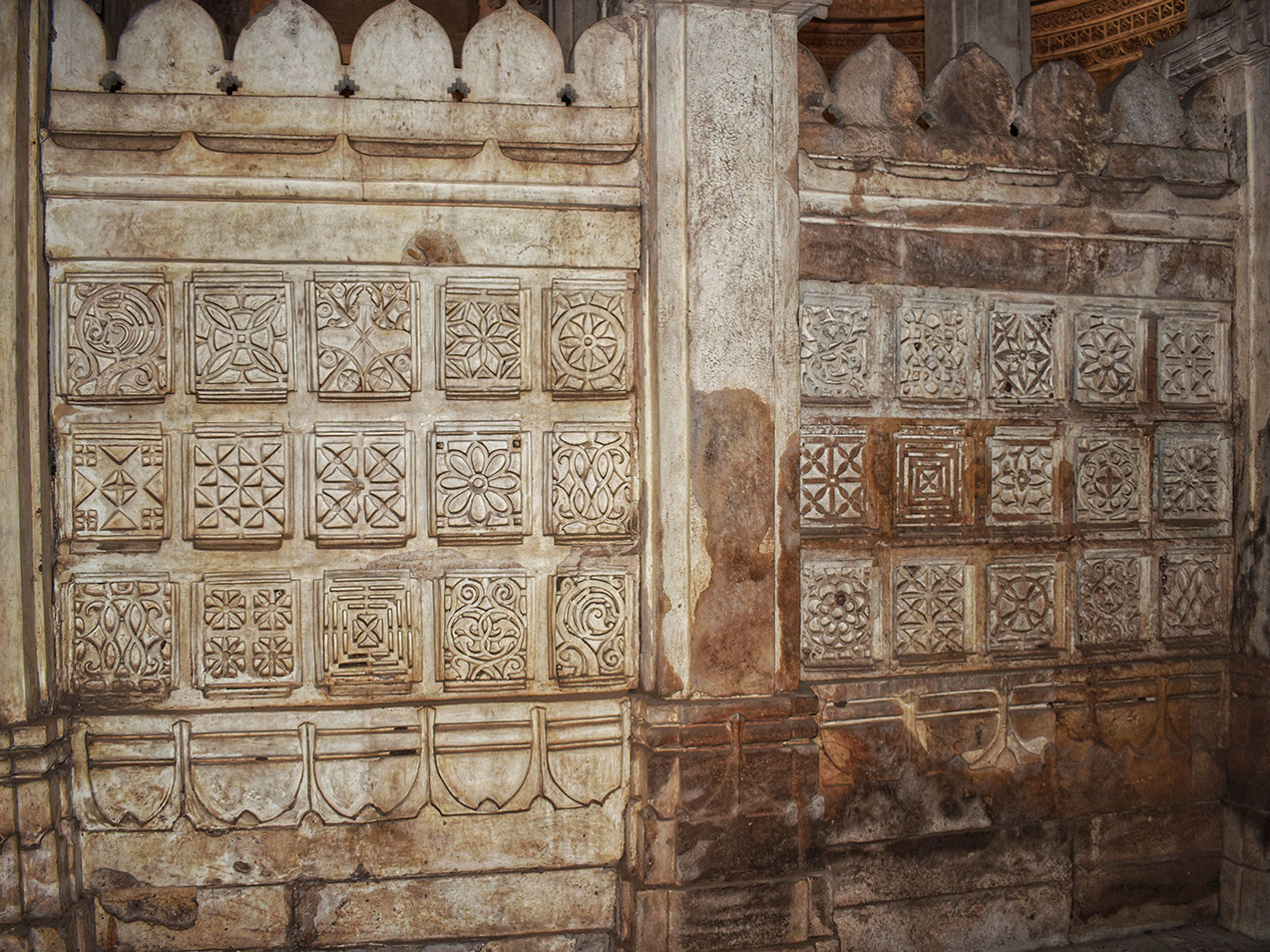
The prayer hall still retains traces of Maqsurah
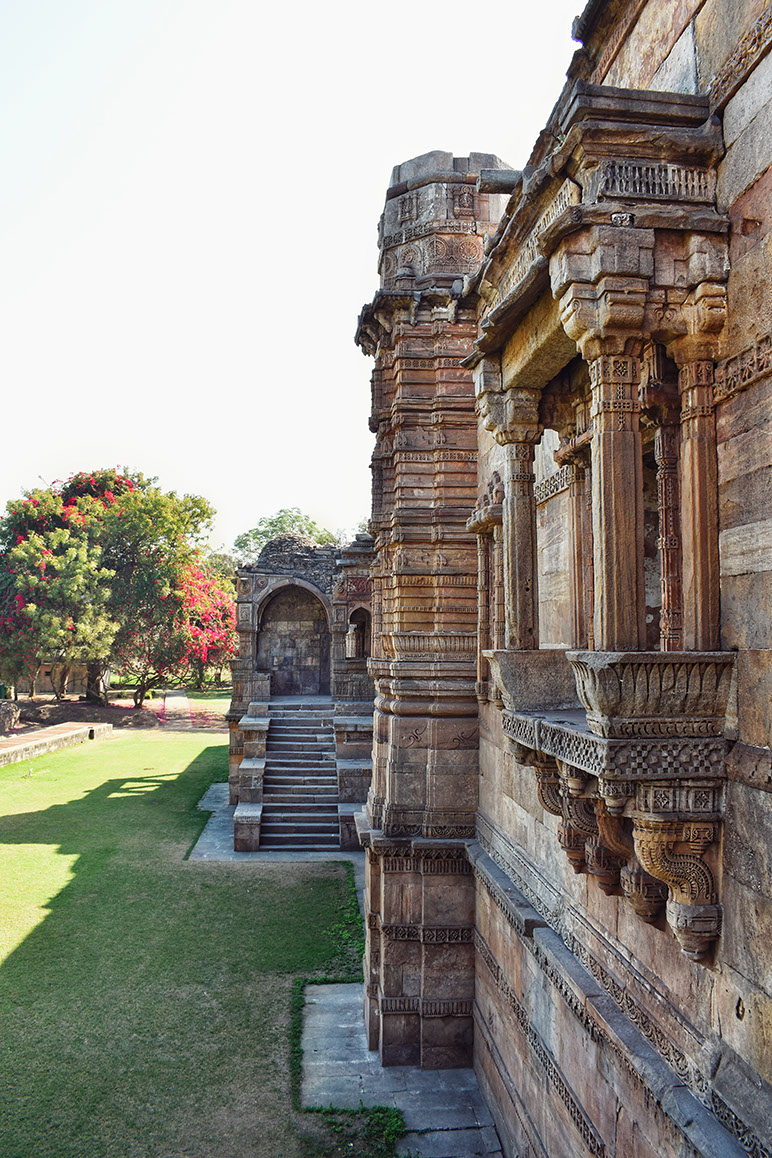
An entrance on the north side of the prayer hall was reserved for women from the royal family
Mahmud Begada, the builder of most monuments in Champaner, constructed them with the primary intention of facilitating prayer. Each mosque featured a designated area known as Wazuh Khana, where a sacred ablution tank was located. To ensure a continuous water supply to these tanks, Champaner employed a water preservation system. Rainwater flowing from the Pavagadh hills was collected and harvested in numerous step wells. Adjacent to the mosque, there is a stepwell that serves as a water source, continuously supplying water to the mosque through an underground channel.
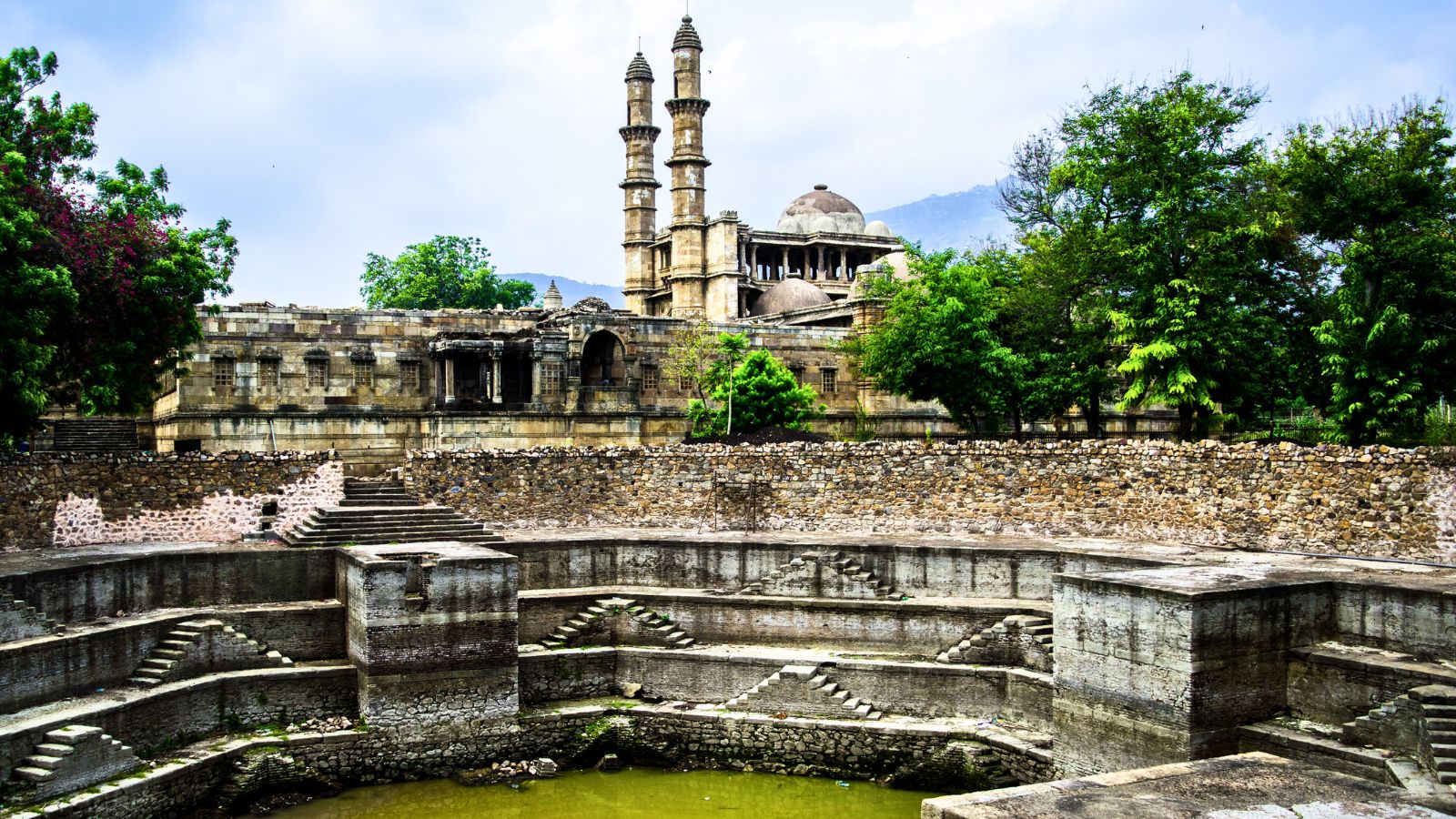
An octagonal stepwell north of Jami Masjid with steps every 5 feet and a depth of 20 feet
Kamani Masjid: a maze of arches
Nestled within the forested area, a short distance away from the main mosques in Champaner, lie the captivating ruins of Kamani Masjid. The Archaeological Survey of India (ASI) embarked on an extensive excavation project in 2008, finally completing it in 2015. The mosque had been almost swallowed by the surrounding sands, making the excavation and restoration a time-consuming endeavor.
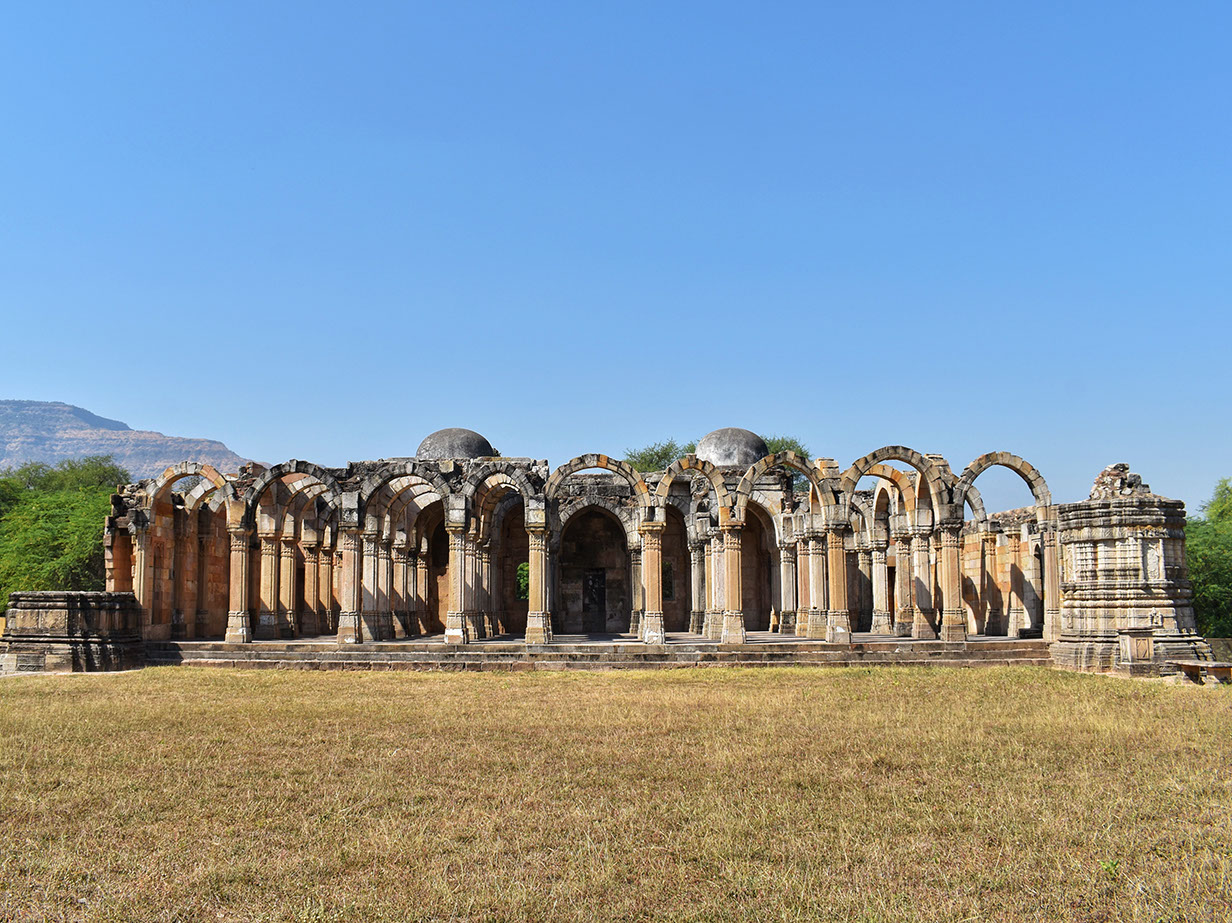
Kamani Masjid's exterior panorama
In its heyday, Kamani Masjid stood amidst a residential neighborhood, as evidenced by the discovery of various household artifacts during the excavation. This suggests that the mosque was intended to serve the local populace. Unfortunately, historical records are sparse, leaving even its original name a mystery. However, owing to its remarkable architecture featuring a pillared hall adorned with arches, it has been affectionately dubbed Kamani Masjid, derived from the Gujarati word "kaman" meaning arch. As of late, it has become a popular sightseeing place in Champaner.
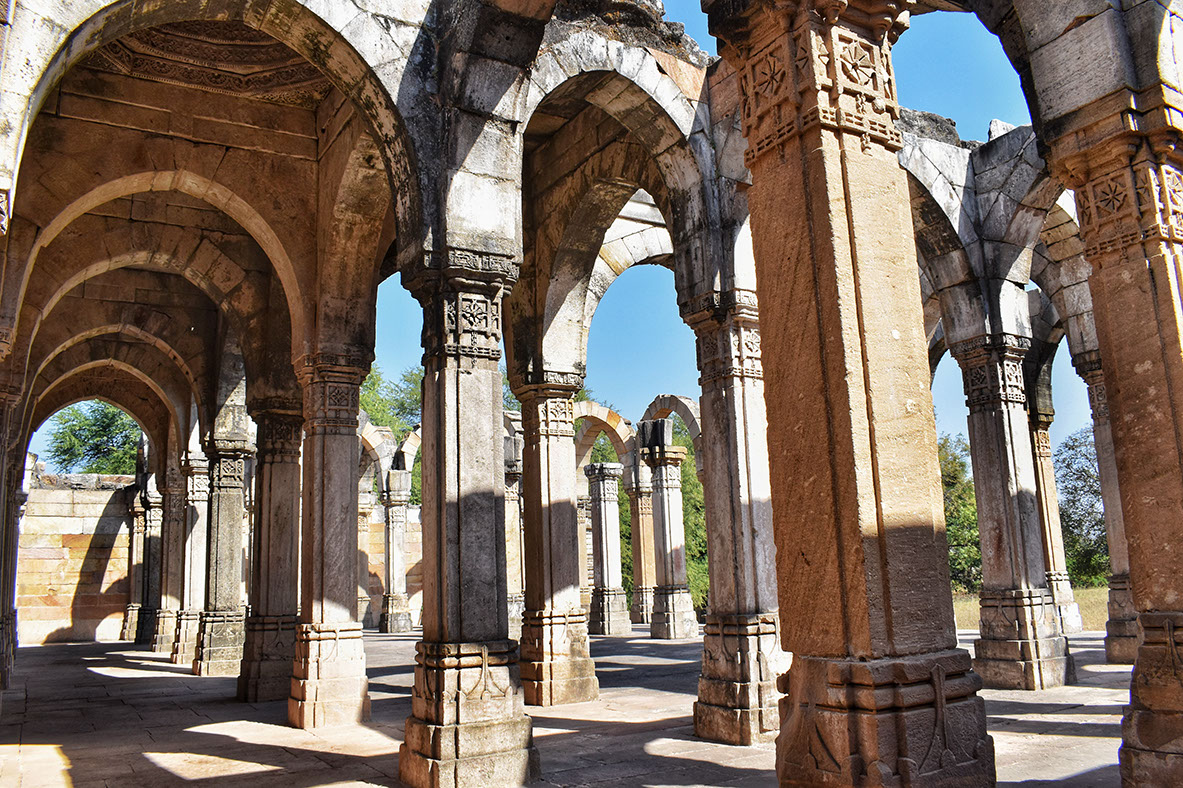
An interior shot of Kamani Masjid with arched pillars and destroyed domes
Kabutarkhana Pavilion: A home for messengers
Kabutarkhana, a charming two-story brick-structure, served a dual purpose during the reign of Mahmud Begada. Situated on the banks of a vast Vadatalav lake, with the majestic Pavagadh hills adorning the opposite side, this building enjoyed a refreshing breeze that provided respite from the sweltering summer heat. The first floor was designated for men, while the ground floor offered a tranquil retreat for the women of the royal families, who would visit to relax and immerse themselves in the scenic beauty surrounding the area.
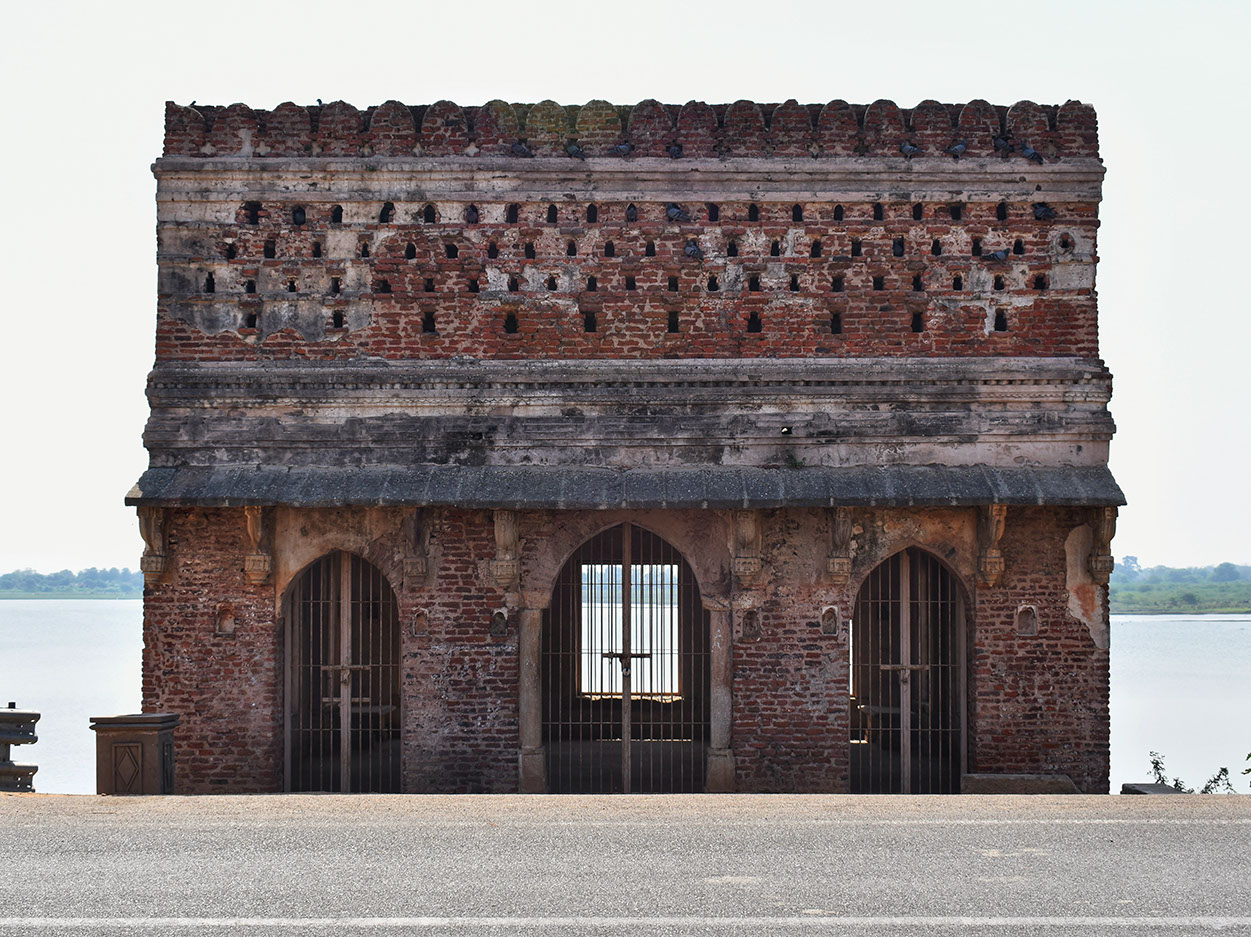
Ruins of Kabutarkhana on the shores of the lake
Notably, Kabutarkhana also served as a sanctuary for pigeons. In ancient times, pigeons were used as messengers for long-distance communication. As the Gujarati word for pigeon is "kabutar" and "khana" refers to a pigeonhole, the name Kabutarkhana aptly captures the building's association with these winged messengers.
Today, Kabutarkhana stands as a testament to the ingenuity of its design, offering visitors a glimpse into the historical significance of this multifunctional structure and the picturesque landscape that once captivated the royal families of Champaner.
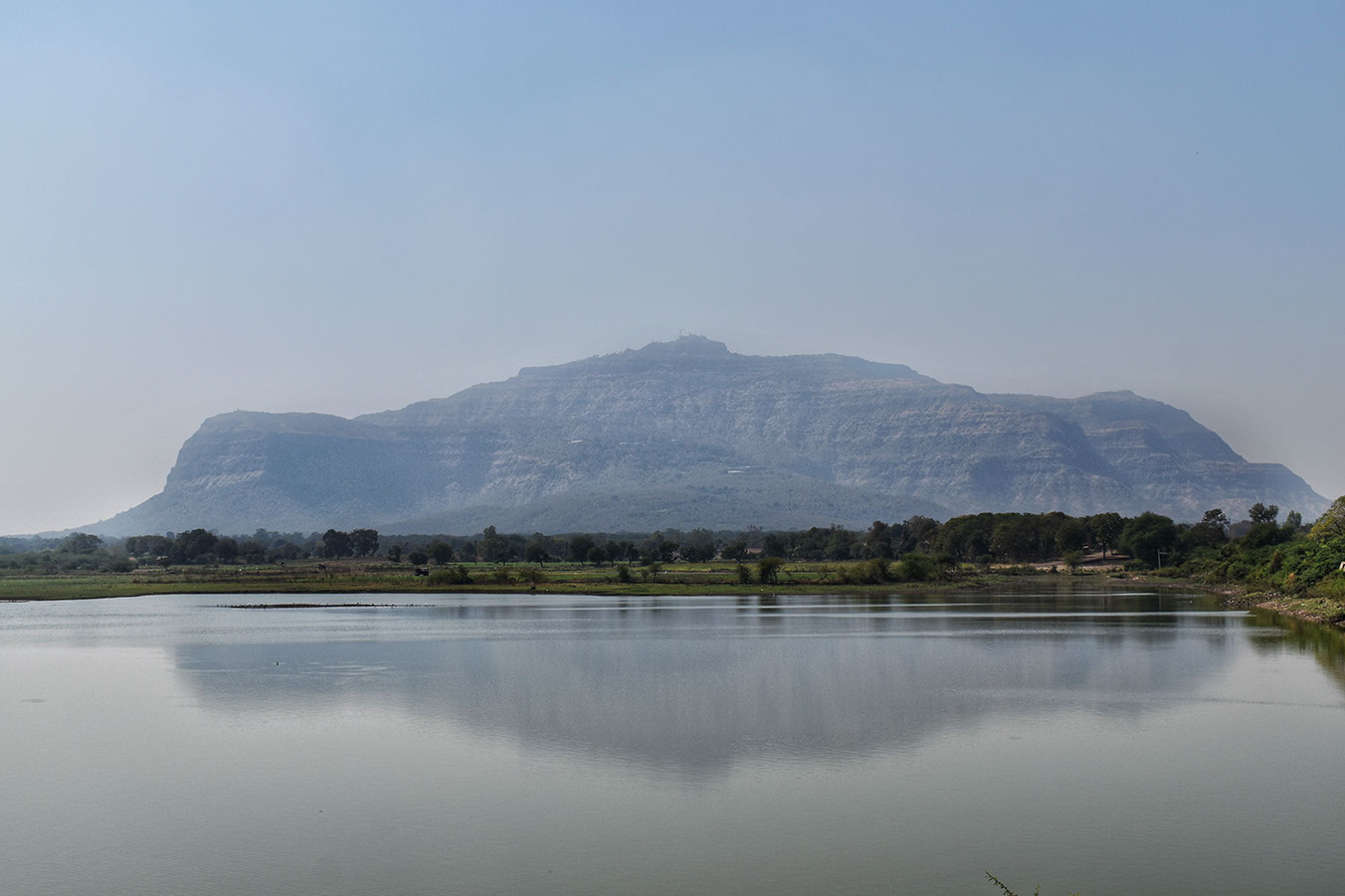
The tranquil surroundings of the Vadatalav lake with Pavagadh hills in the background
Khajuri Masjid: A bygone era
On the opposite side of Kabutarkhana, lies the mesmerizing ruins of Khajuri Masjid. Resembling Kamani Masjid in design, this mosque differs in its pillar structure, lacking the characteristic arches. With the roof and domes in a state of disrepair, Khajuri Masjid now stands as an open-air structure. The mosque derives its name from the abundance of palm trees that once adorned the area, as "khajur" translates to dates in English. Regrettably, limited historical information exists about this enigmatic mosque, leaving much of its past shrouded in mystery.
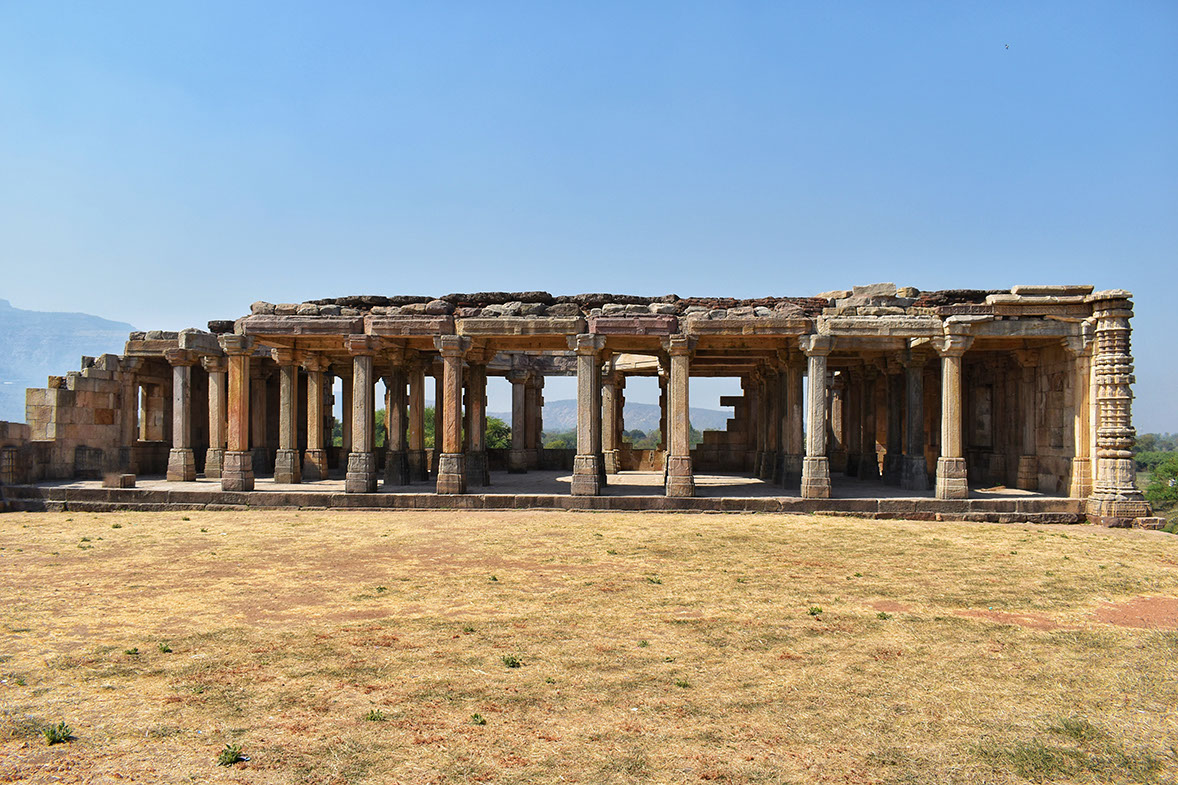
The ruins of Khajuri Masjid opposite to Vadatalav
Kevada Masjid: A flight of intricate dreams
Located in a secluded forested area, Kevada Masjid in Champaner unveils its hidden charm. As you approach, you'll be captivated by its ornate three-arched facade, showcasing intricate detailing. In this rectangular mosque, beautifully carved minarets rise gracefully and feature elaborate floral and geometrical designs.
One of the mosque's remarkable features is its mausoleum, a cenotaph that adds a touch of significance. The square-shaped cenotaph boasts a central dome adorned with fluted patterns, complemented by four corner domes, creating a visually stunning ensemble.
Inside the mosque, you'll discover intricately carved mihrabs, exuding an aura of craftsmanship. The niches showcase an interplay of floral and geometrical designs, evoking a sense of beauty and spirituality. Because Champaner tourism hasn't placed a signage board directing visitors to this mosque, it's off the tourist radar.
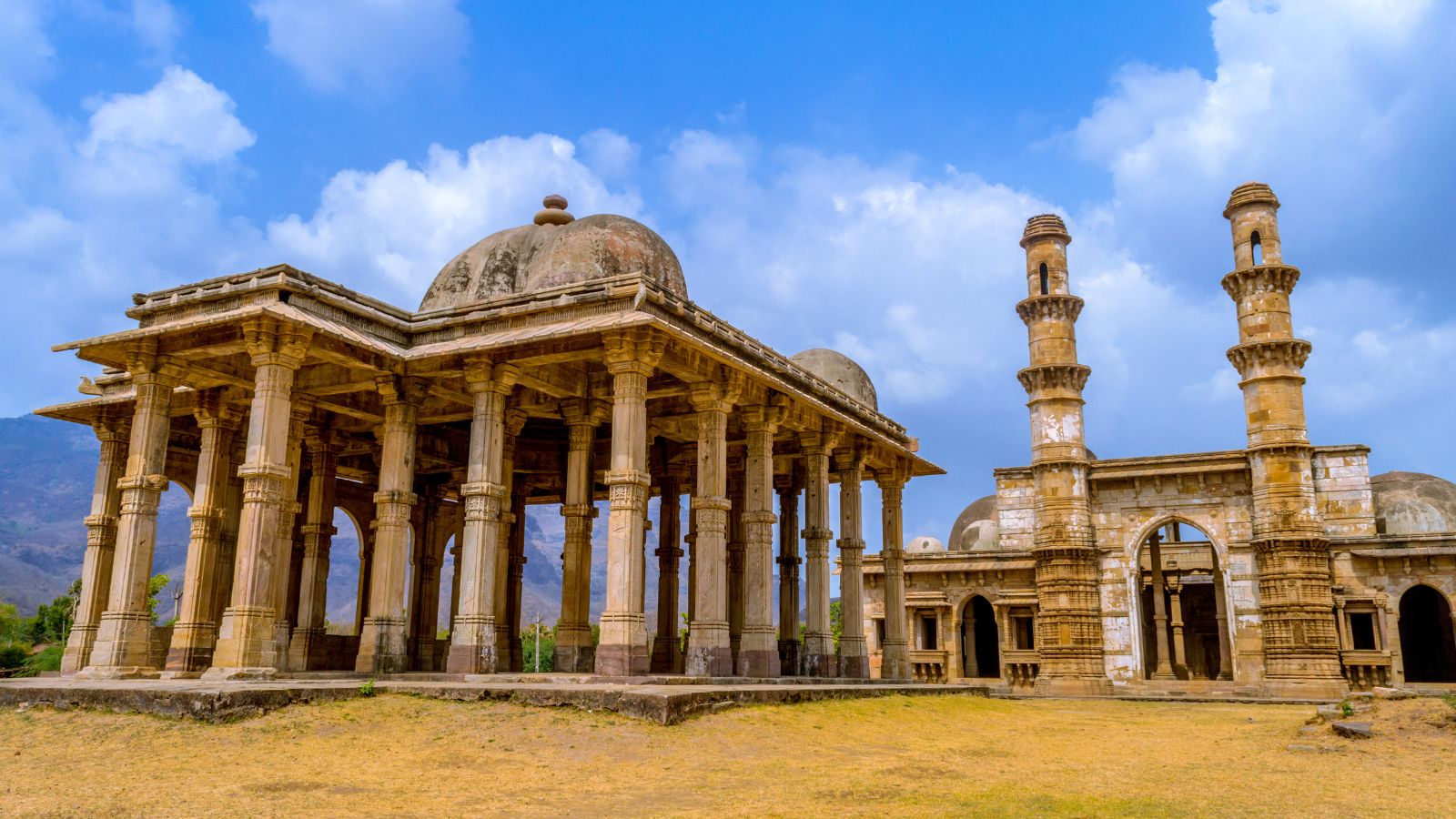
Kevada Masjid and the cenotaph in front
Nagina Masjid: A blossom of stone
Nagina Masjid in Champaner derives its name from its radiant beauty, as "Nagina" translates to "Jewel." The mosque stands on a raised plinth, offering a commanding view of its expansive open courtyard. Constructed entirely of pristine white stone, it exudes an ethereal charm.
As you enter, your eyes will be drawn to the three mihrabs, marking the direction of prayer. These intricately designed alcoves add a touch of elegance and spiritual significance to the mosque's interior. The minarets of Nagina Masjid, like those of its counterparts, showcase exquisite carvings with delicate floral motifs adorning the niches. These intricate details reflect the mastery of craftsmanship.
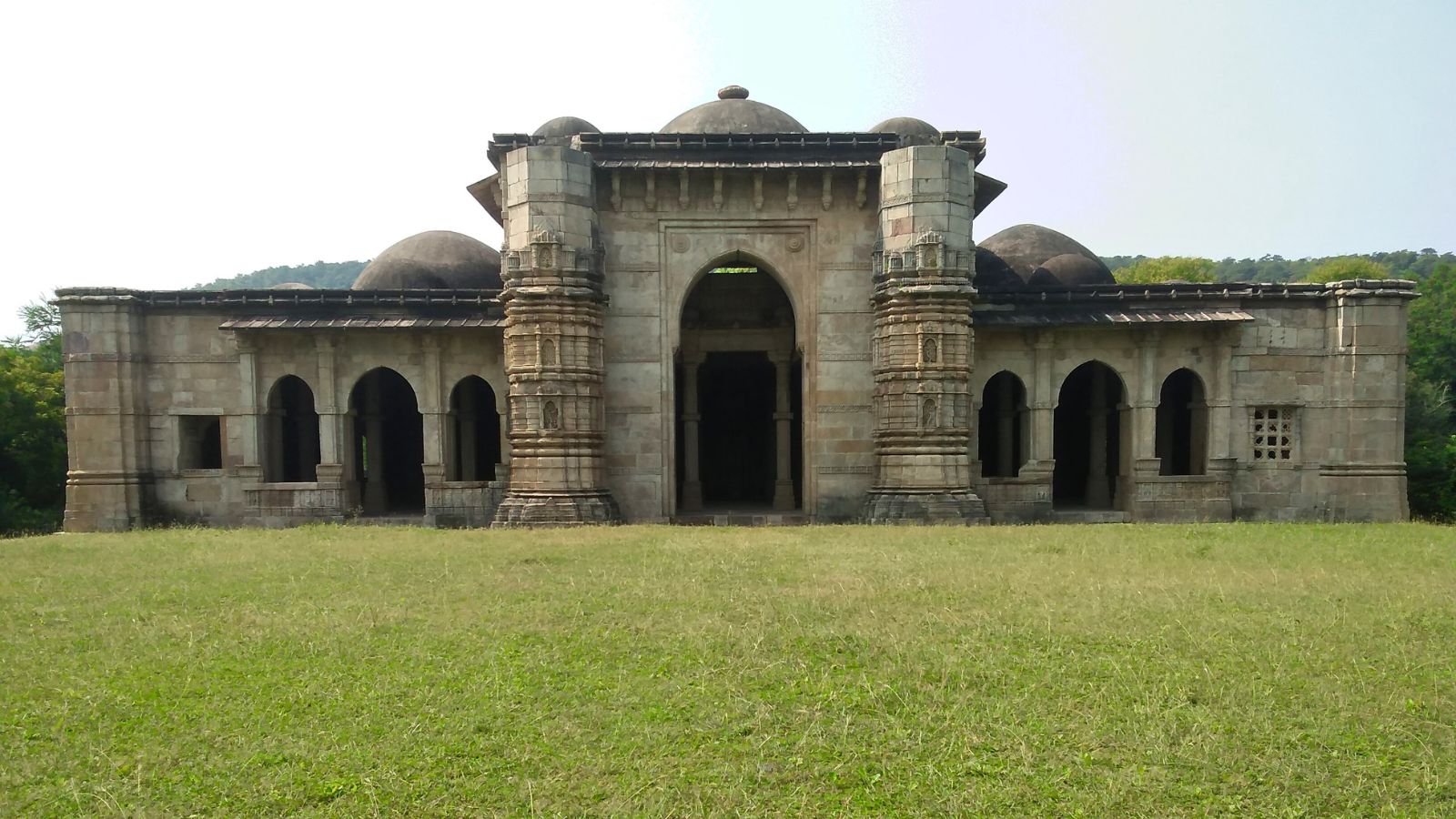
A view of the courtyard and the front of Nagina Masjid
Sat Kaman: The legacy of Champaner
With our visits to the prominent monuments in Champaner nearing completion, our attention turned towards a famous attraction atop the Pavagadh hills - Sat Kaman. Positioned near one of the gates on the Western side of the fort, Sat Kaman, also known as the Seven Arches, awaited our arrival. Constructed using local sandstone and employing keylocking techniques, these arches showcased remarkable craftsmanship. Each arch was formed by skillfully arranging trapezium-shaped stones, with a wedge-shaped stone crowning the top.
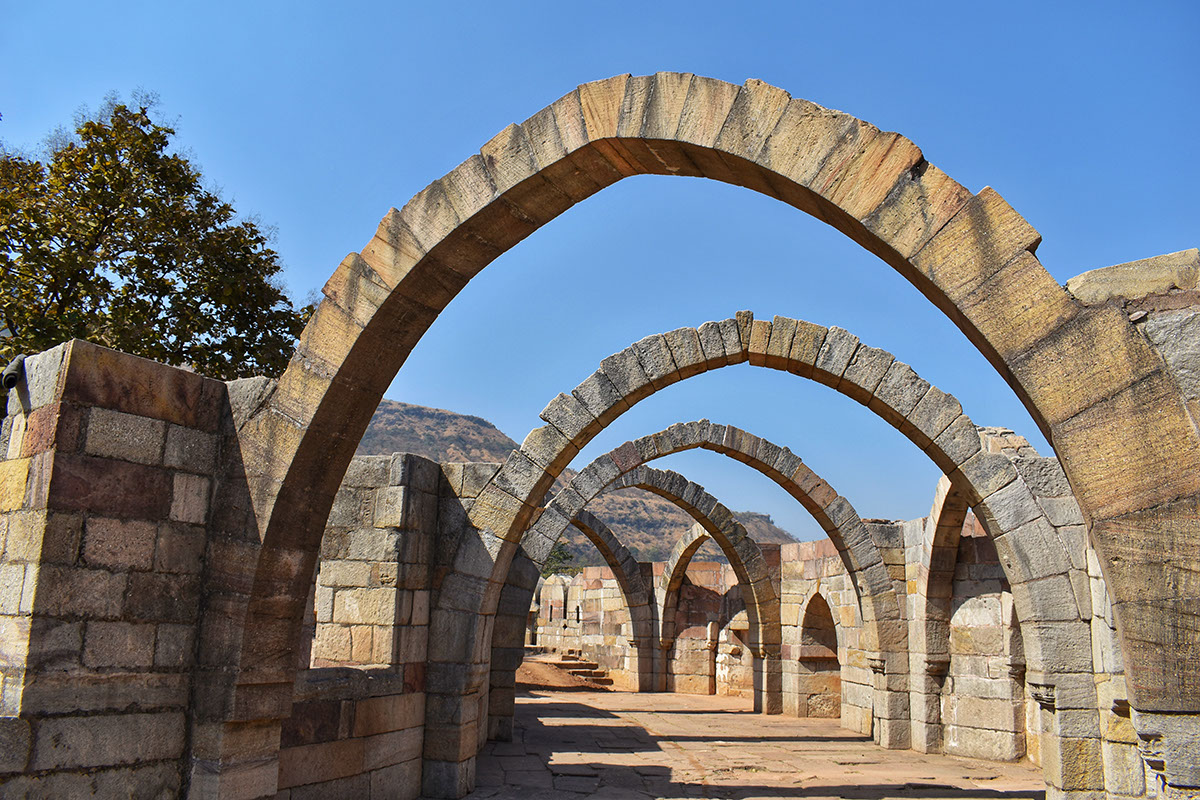
Champaner is synonymous with Sat Kaman
In the past, this area served as gate numbers 4 and 5 of the fort, although the walls surrounding the gates have since suffered damage. Originally, the purpose of Sat Kaman was to provide an elevated vantage point for the soldiers, allowing them to survey the entire expanse of Champaner city.
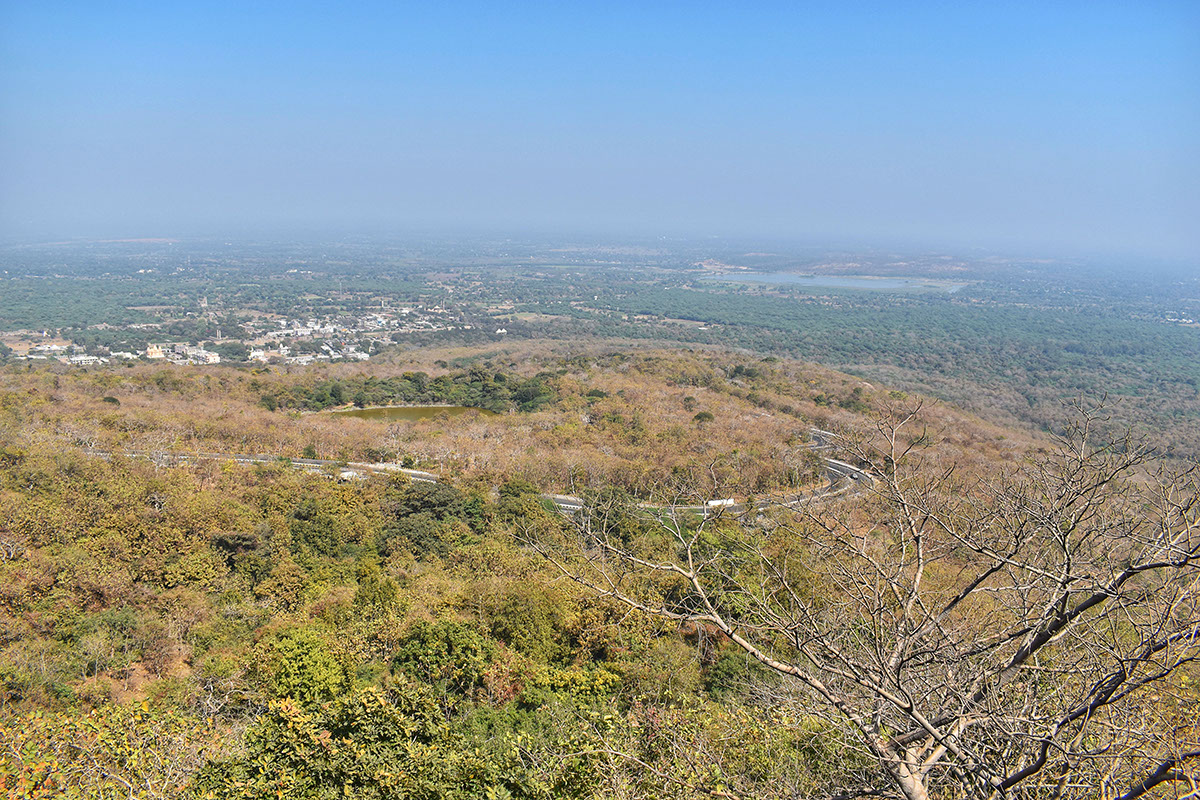
Champaner and surrounding area as seen from Sat Kaman
Helical Stepped Well: A journey to the center of the earth
As our time in Champaner drew to a close, we prepared to depart for Vadodara. My stomach was growling and I was craving some local Gujarati cuisine However, we couldn't resist exploring two intriguing monuments that lay along our route. The first of these captivating sites was the Helical Stepped Well, a magnificent structure designed to provide drinking water to the residents of Champaner. This well, reaching a depth of 180 feet, boasted an impressive construction of bricks and stones.
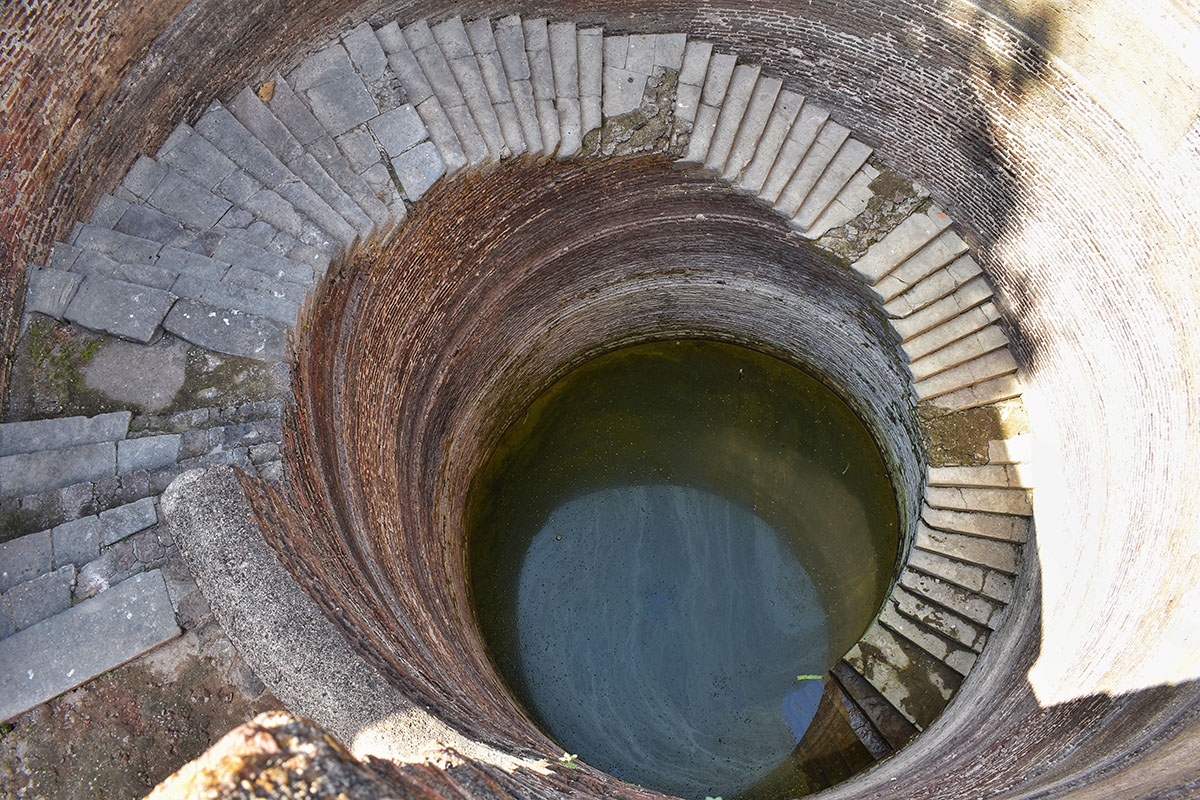
A view from above of the Helical Stepwell with spiral stairs leading to the water
Its distinctive feature was the spiral staircase, allowing visitors to descend into its depths. Each step spanned a width of 1.2 meters, ensuring safe passage. Surrounding this architectural marvel is a charming courtyard, adding to the overall allure of the Helical Stepped Well. The city of Champaner had a great water engineering and rainwater harvesting system, which made it known as "the city of a thousand wells."
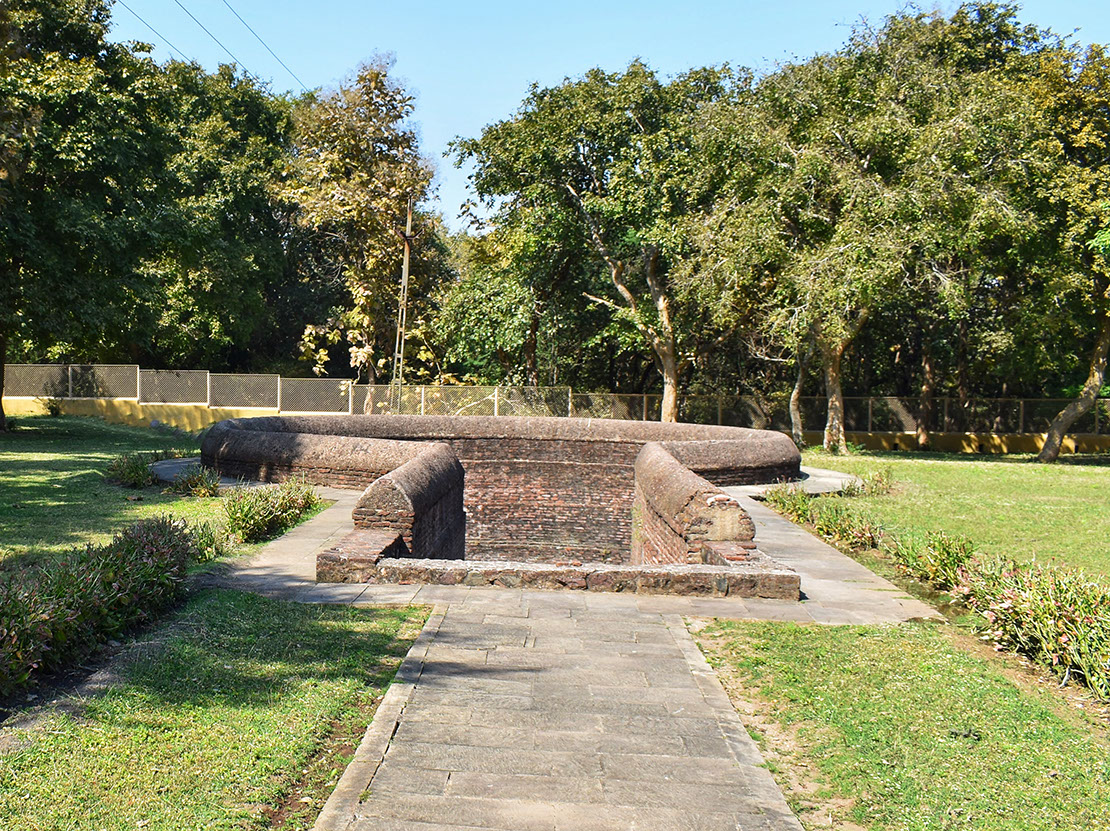
A beautiful courtyard surrounds the Helical Well
Sakar Khan's Dargah
As we approached the end of our journey, we arrived at a captivating monument undergoing its final stages of resurrection under the dedicated efforts of ASI. Standing proudly just before the main entry gate of Champaner, we encountered Sarkar Khan's Tomb, considered the largest tomb in the entire city. Its square-shaped structure, adorned with a grand dome and a facade graced by numerous windows, exuded an aura of magnificence. Stepping inside, I was greeted by an equally captivating interior featuring a spacious dome and intricate carvings adorning the supporting arch.
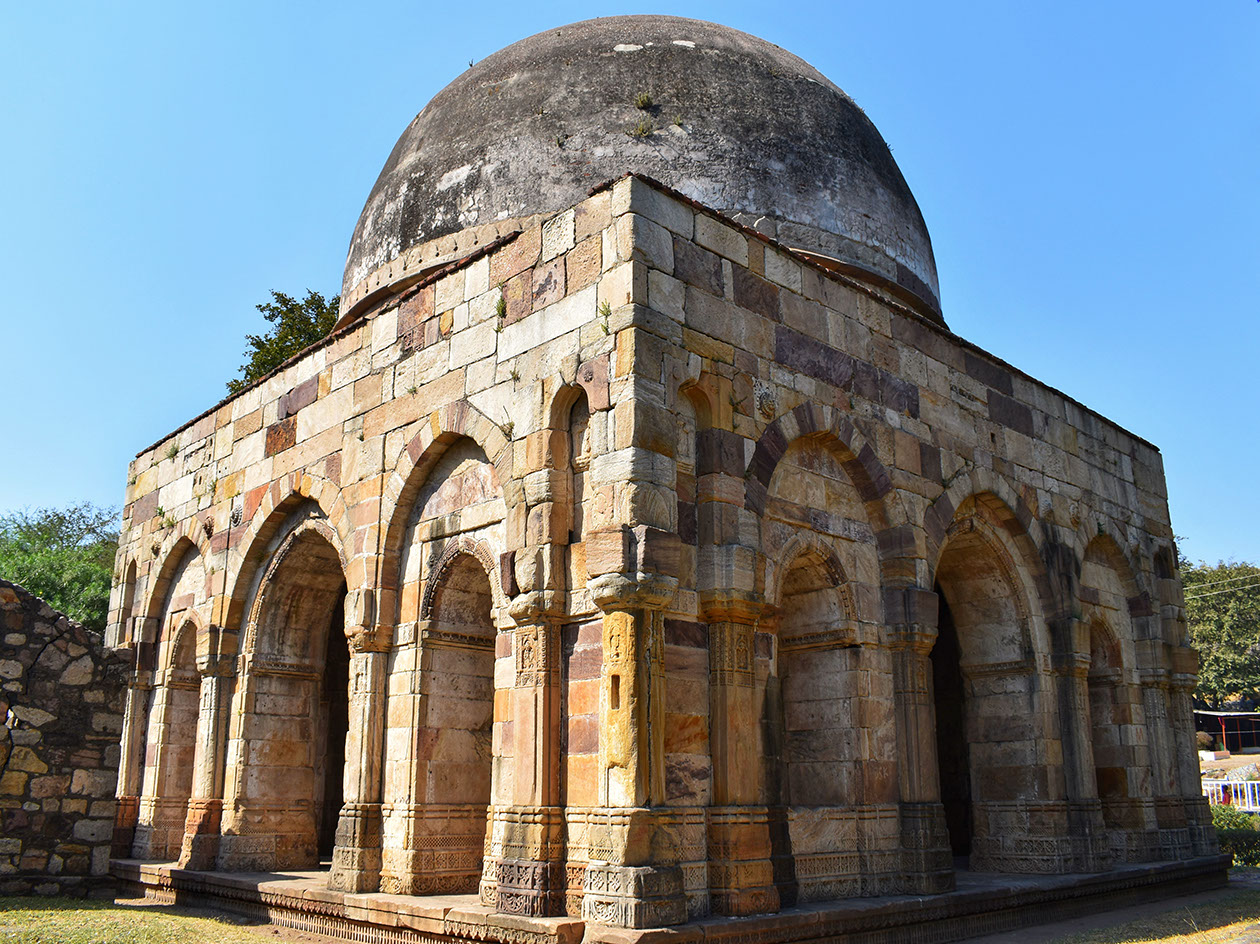
Sakar Khan's Dargah in Champaner's outskirts is a strikingly beautiful structure
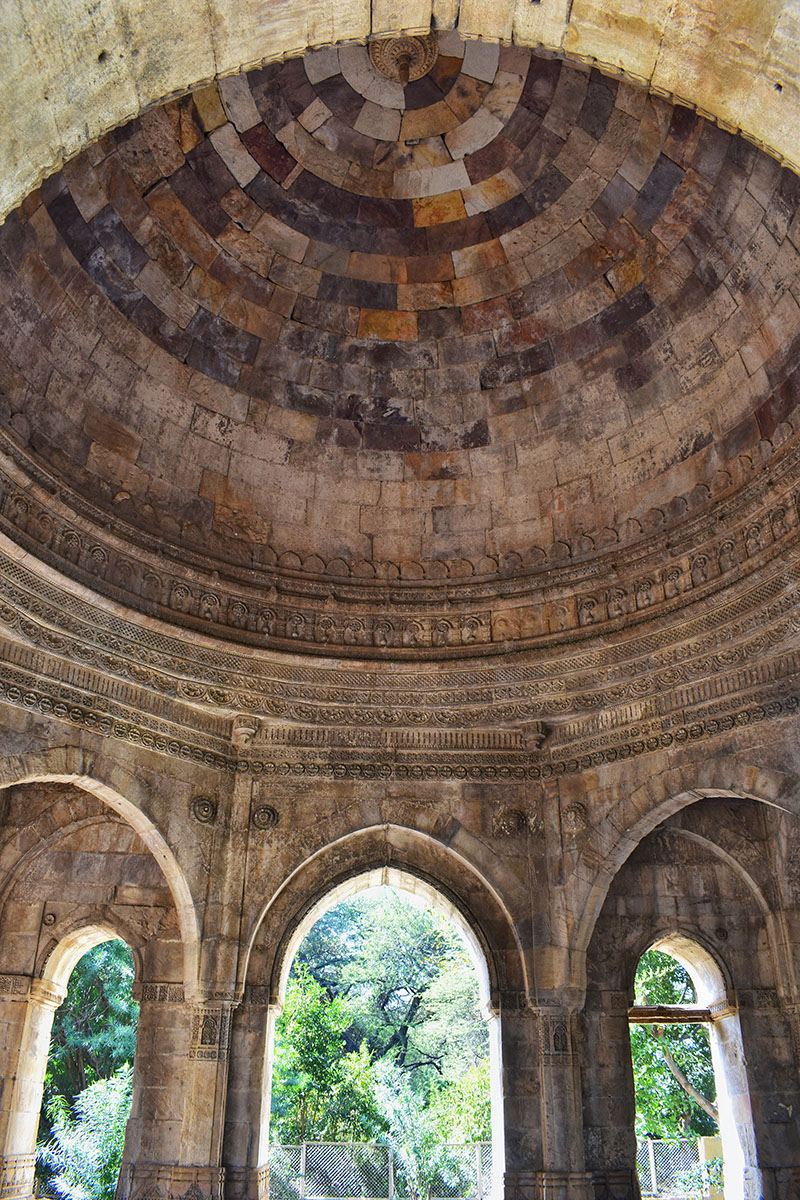
An interior view of Sakar Khan's Tomb with its colorful tile design
The untold story...
As I bid farewell to the enchanting city of Champaner, a wave of bittersweet emotions washed over me. It was a journey that unearthed hidden treasures, both in the form of majestic monuments and forgotten stories. Standing amidst the ruins, I couldn't help but feel a deep sense of longing and melancholy for this city, once a thriving capital, now lost in the mists of time. The whispers of its past echoed in my ears, urging me to cherish and preserve the remnants of this forgotten gem. Champaner, with its rich history and architectural marvels, reminded me of the ephemeral nature of human existence and the importance of preserving our heritage. As I walked away, a part of me remained intertwined with the ancient stones, vowing to keep the memories of Champaner alive and to share its tale with the world.
Frequently Asked Questions:
What is the best way to reach Champaner?
The most convenient way to reach Champaner is by road. You can take a taxi or drive from nearby cities like Vadodara and Ahmedabad. Chamaner is 50 km from Vadodara and 150 km from Ahmedabad. Buses run regularly from Vadodara to Champaner. There are also flights and trains to Vadodara and Ahmedabad. Ahmedabad, an international airport, has better flight connections than Vadodara.
What are the accommodation options in Champaner?
Champaner, being a small place, does not have decent hotels for accommodation. However, the best option for lodging would be Vadodara. There are a wide range of hotels in Vadodara to suit every budget, ranging from luxury hotels to budget accommodations. You can find well-known hotel chains, boutique hotels, and even homestays in Vadodara.
What is the Champaner-Pavagadh Archaeological Park?
Champaner-Pavagadh Archaeological Park is a UNESCO World Heritage Site in Gujarat, India. It encompasses the historical city of Champaner and Pavagadh Hill. In addition to its rich cultural heritage, the park also features Indo-Islamic architectural styles. The city preserves several ancient temples, mosques, forts, and step wells, which provide an insight into the religious significance and remnants of the medieval city. The park provides visitors with an opportunity to learn about the region's fascinating history and architecture.
What are the must-try local dishes in Champaner?
As Champaner lacks decent dining options, it is recommended to travel nearby to Vadodara or Halol to experience the culinary delights. A Gujarati thali is a must-try, which includes a variety of vegetarian dishes prepared in a traditional manner. Gujarati cuisine is known for its flavorful curries, snacks like dhokla and khandvi, and sweets like jalebi and shrikhand. You can savor the flavors of Gujarat in Vadodara's many restaurants and eateries that serve delectable local dishes.
How much is the entrance fee to Champaner-Pavagadh Archaeological Park?
The entrance fee to Champaner-Pavagadh Archaeological Park is INR 40 for Indian nationals and INR 500 for foreigners. It is advisable to carry the required amount in cash as credit or debit cards may not be accepted at the ticket counter. The entrance fee allows visitors to explore the park and its various historical monuments.
What are the visiting hours of Champaner-Pavagadh Archaeological Park?
Champaner-Pavagadh Archaeological Park is open daily from 8:30 am to 5:00 pm. During these hours, visitors have ample time to explore the park and its fascinating historical sites. Plan your visit accordingly and give yourself enough time to appreciate the beauty and history of this UNESCO World Heritage Site.
Can we go camping in Champaner?
The Champaner-Pavagadh Archaeological Park does not permit camping. The park is primarily intended for the exploration of historical and archaeological sites. There may, however, be camping options available in the surrounding area or nearby campsites outside of the park.
Are there any guided tours in Champaner?
There are no official guided tours offered by Gujarat tourism in Champaner. There are, however, a few private guided tours from Vadodara and Ahmedabad.
Which nearby attractions are recommended along with Champaner?
There are several nearby attractions you can explore when visiting Champaner. One of the must-visit attractions is the Kalika Mata Temple located on the Pavagadh Hill. Enjoy panoramic views of the surrounding landscape by taking a scenic ropeway ride to the hilltop.
Disclaimer: This blog may contain affiliate links. At no extra cost to you, we may get a small commission if you buy anything. All products and services we endorse have been personally used or come highly recommended to us. These incomes allow us to keep the community supported and ad-free.


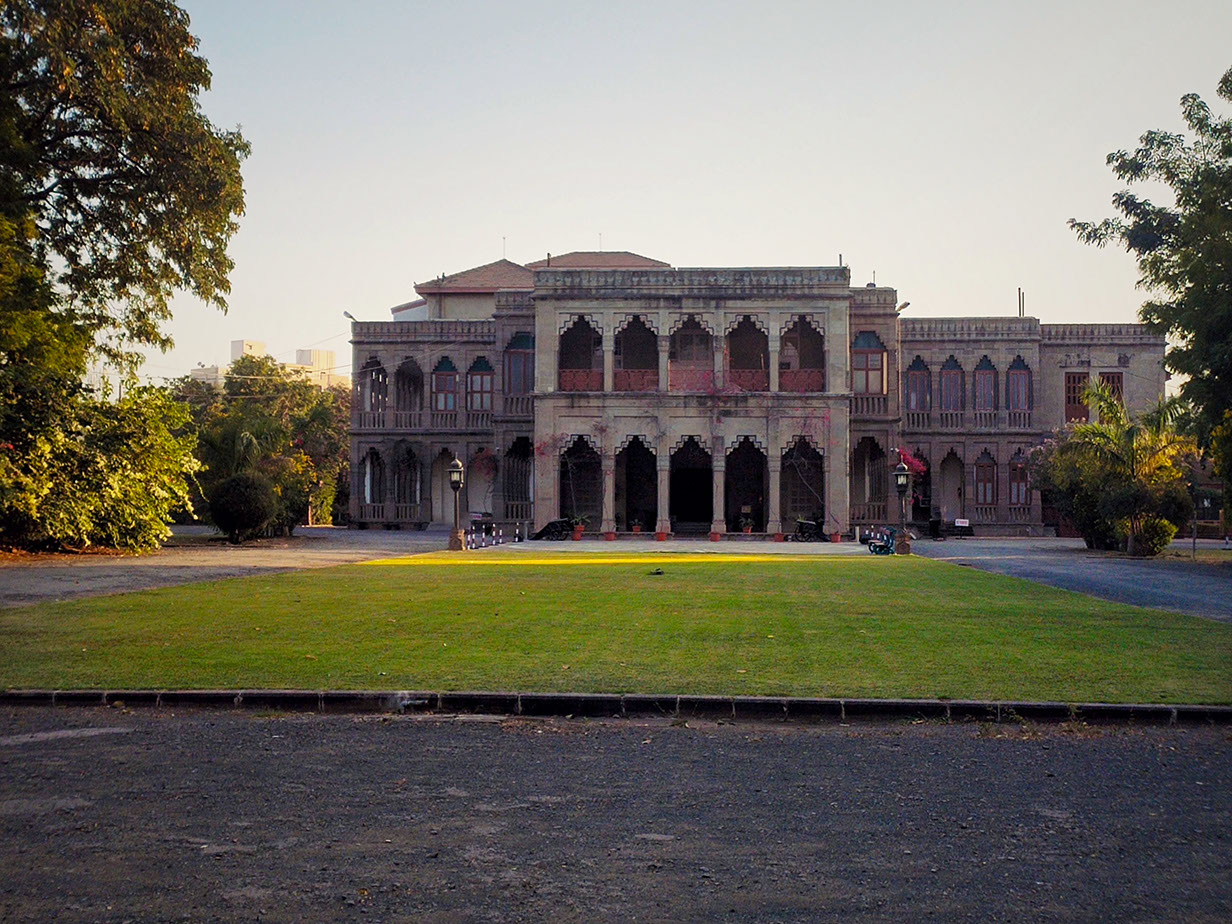
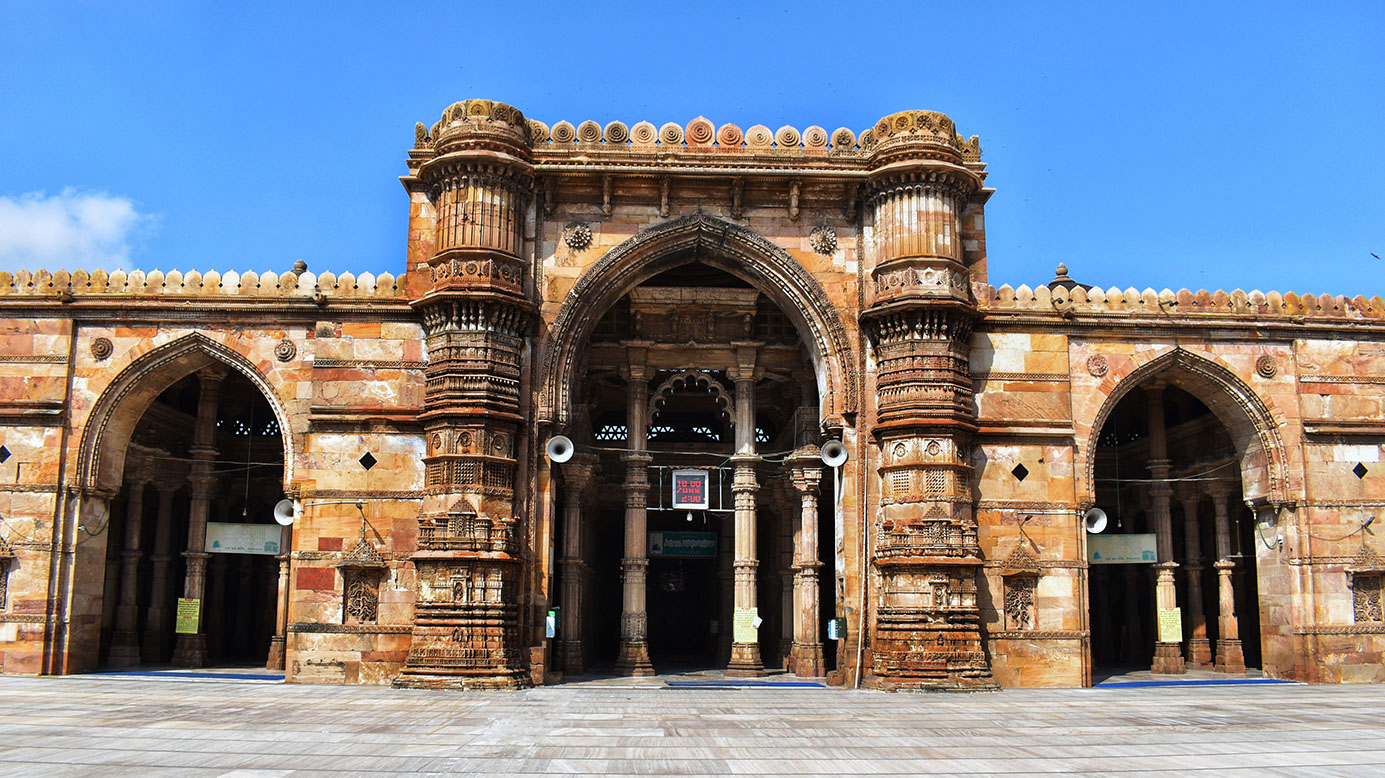


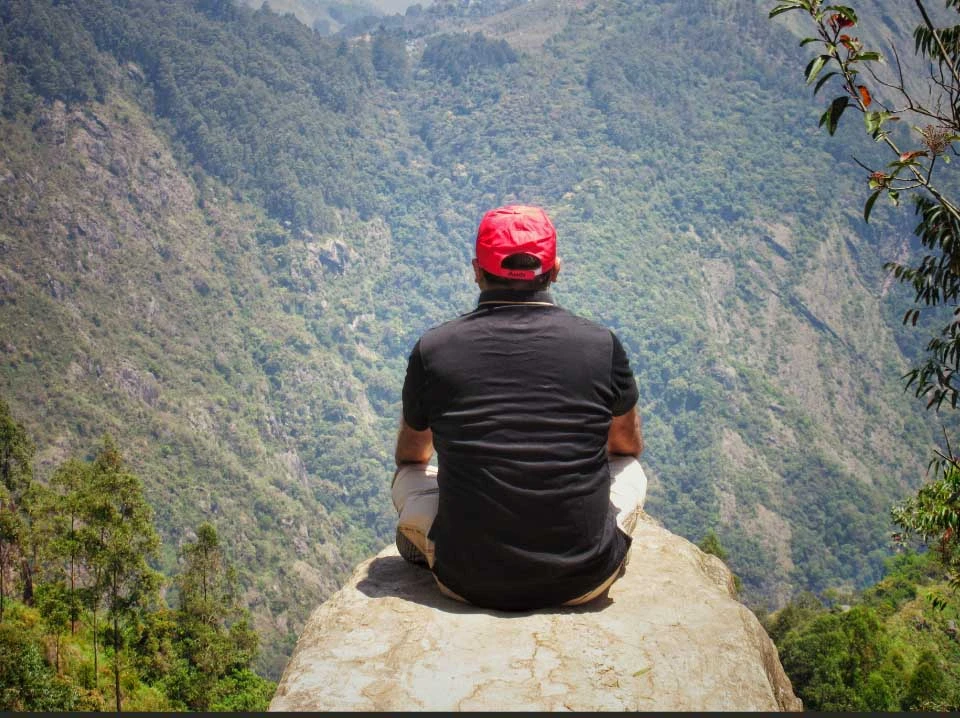
Name
Email
Comment